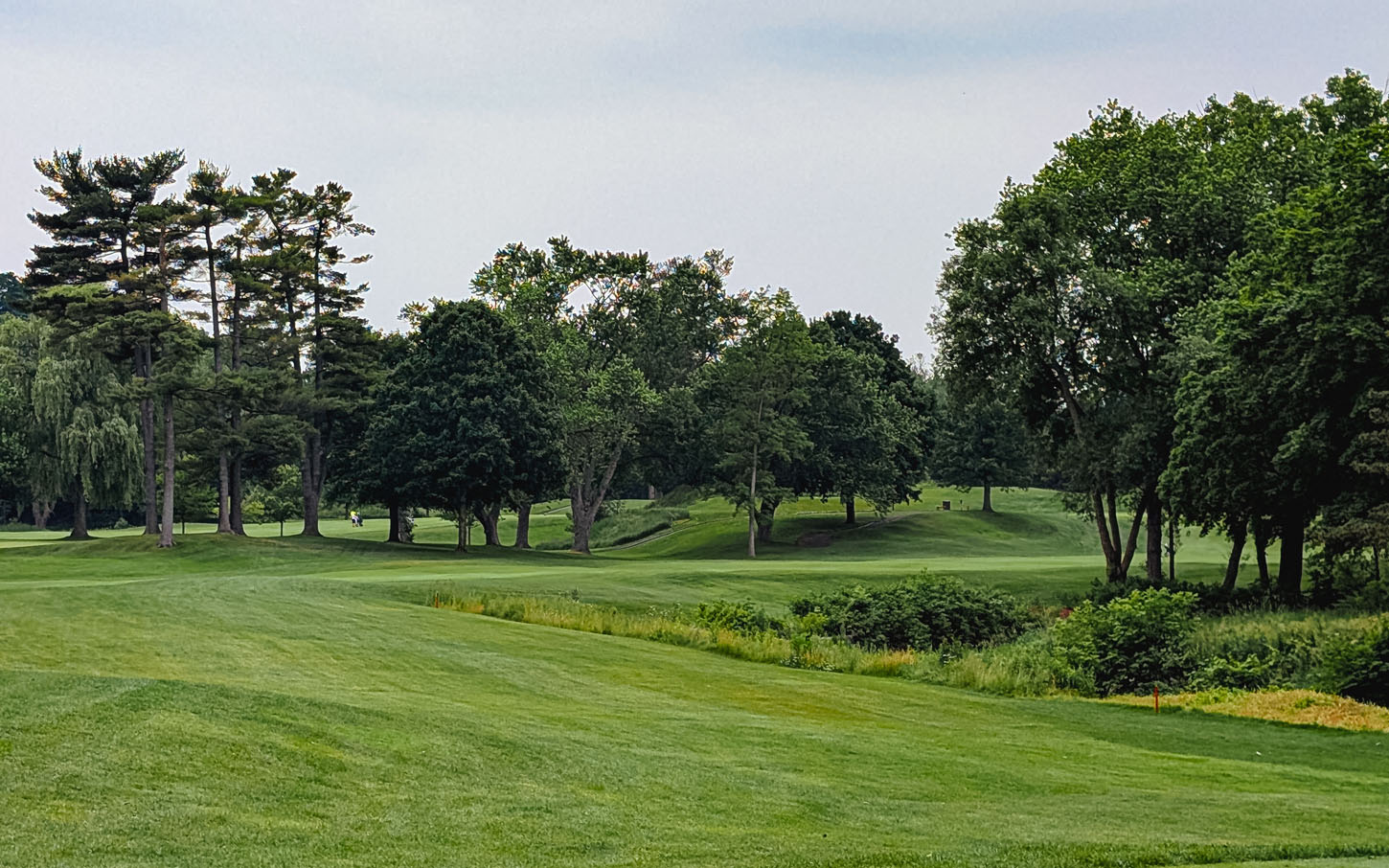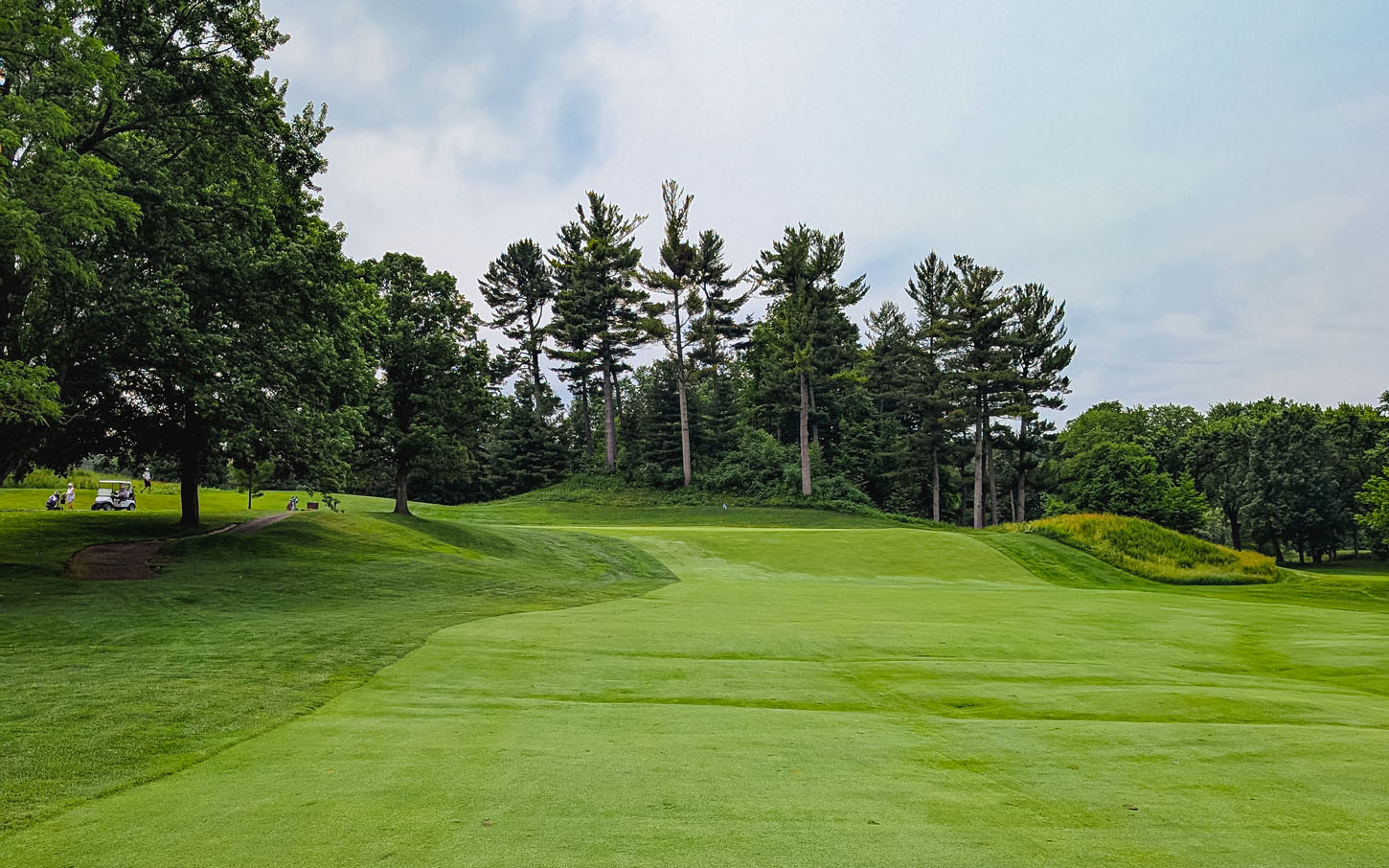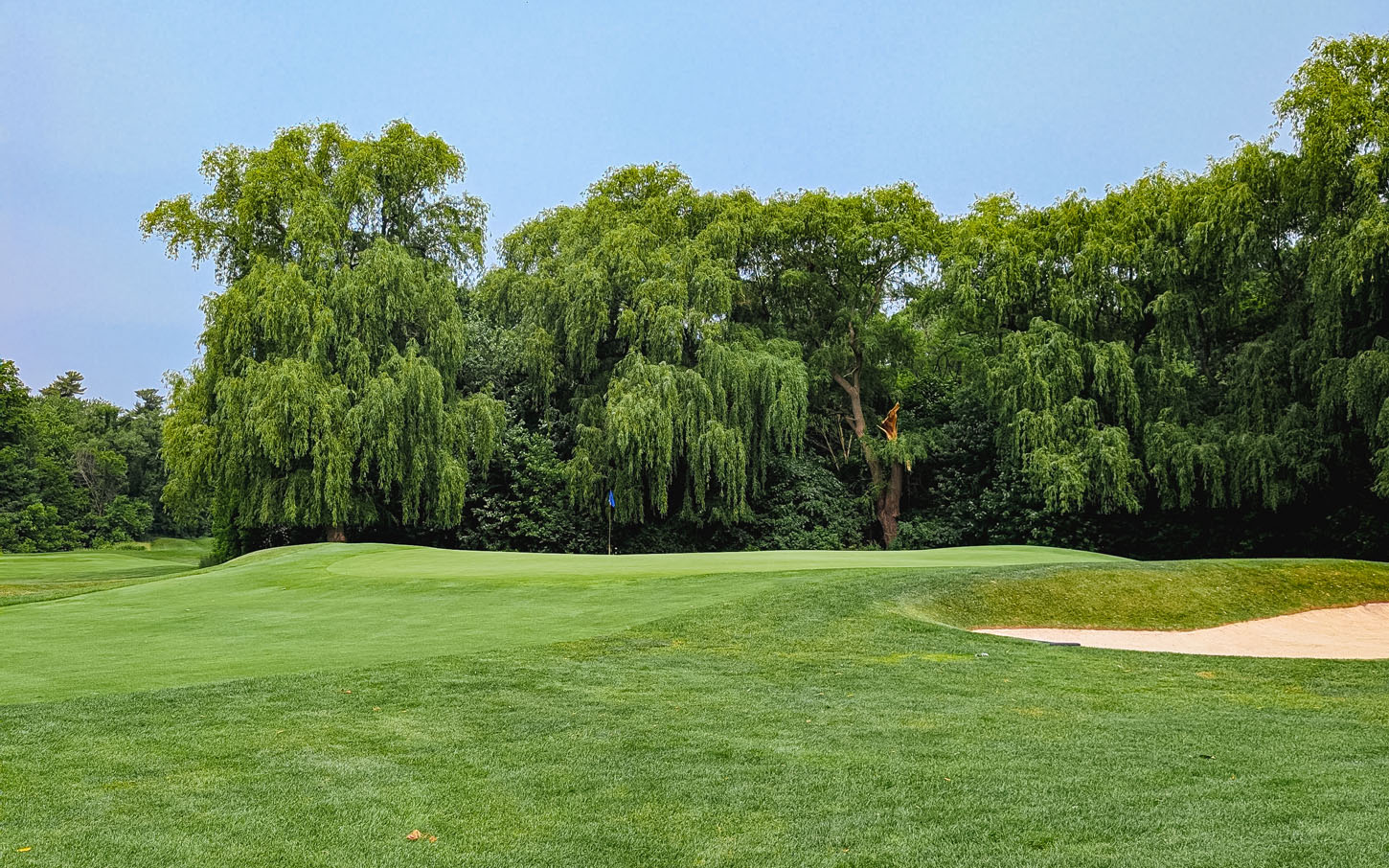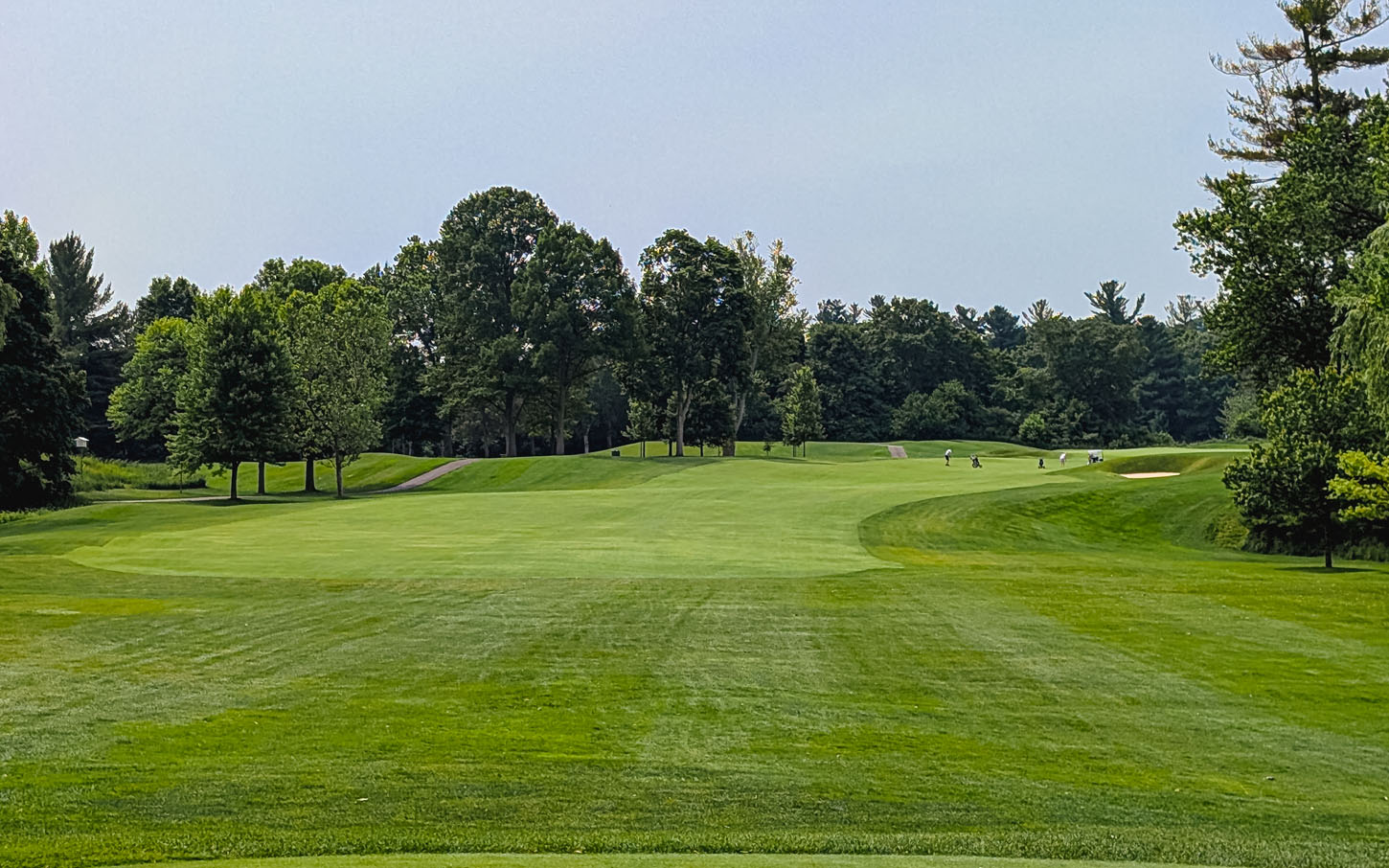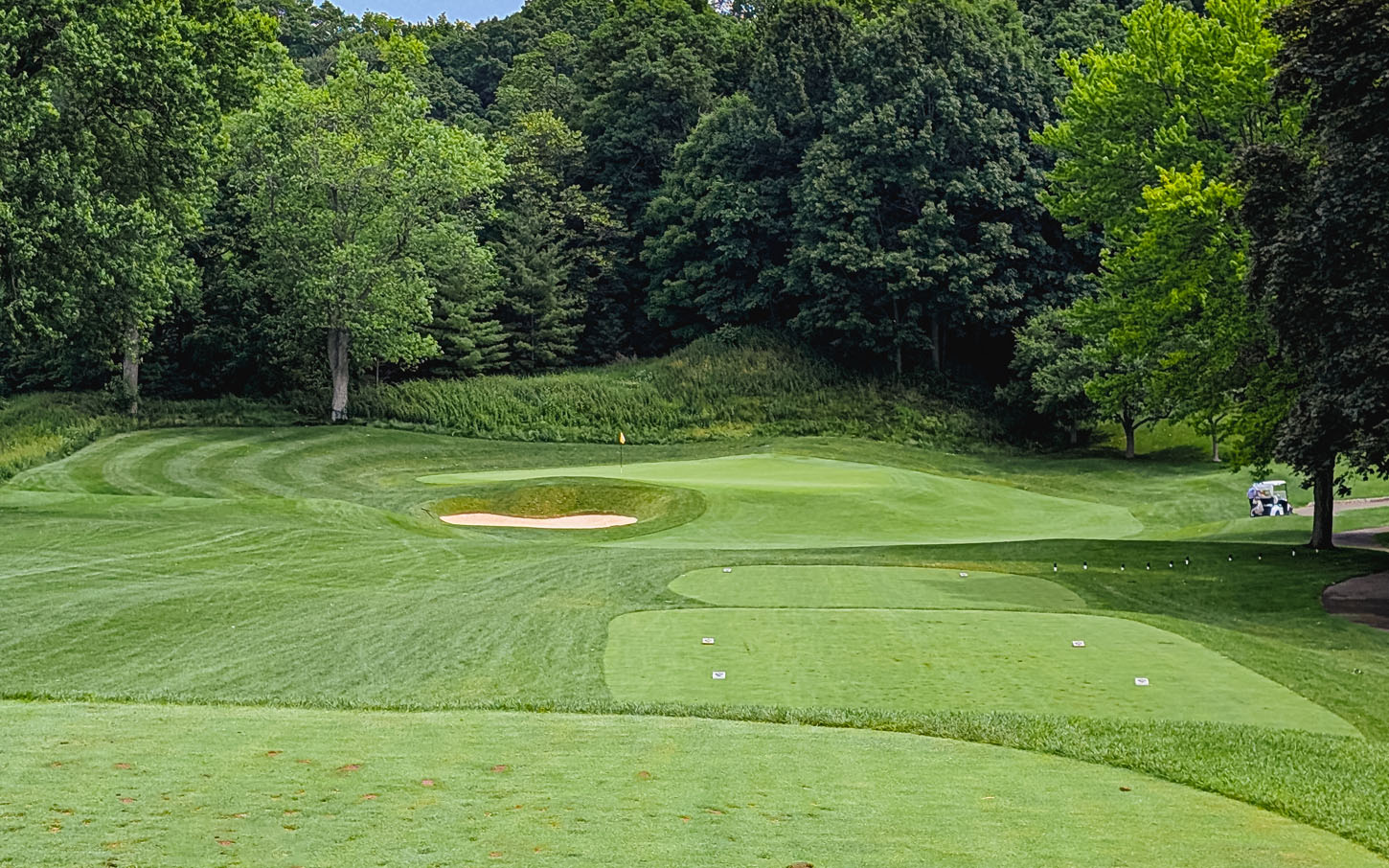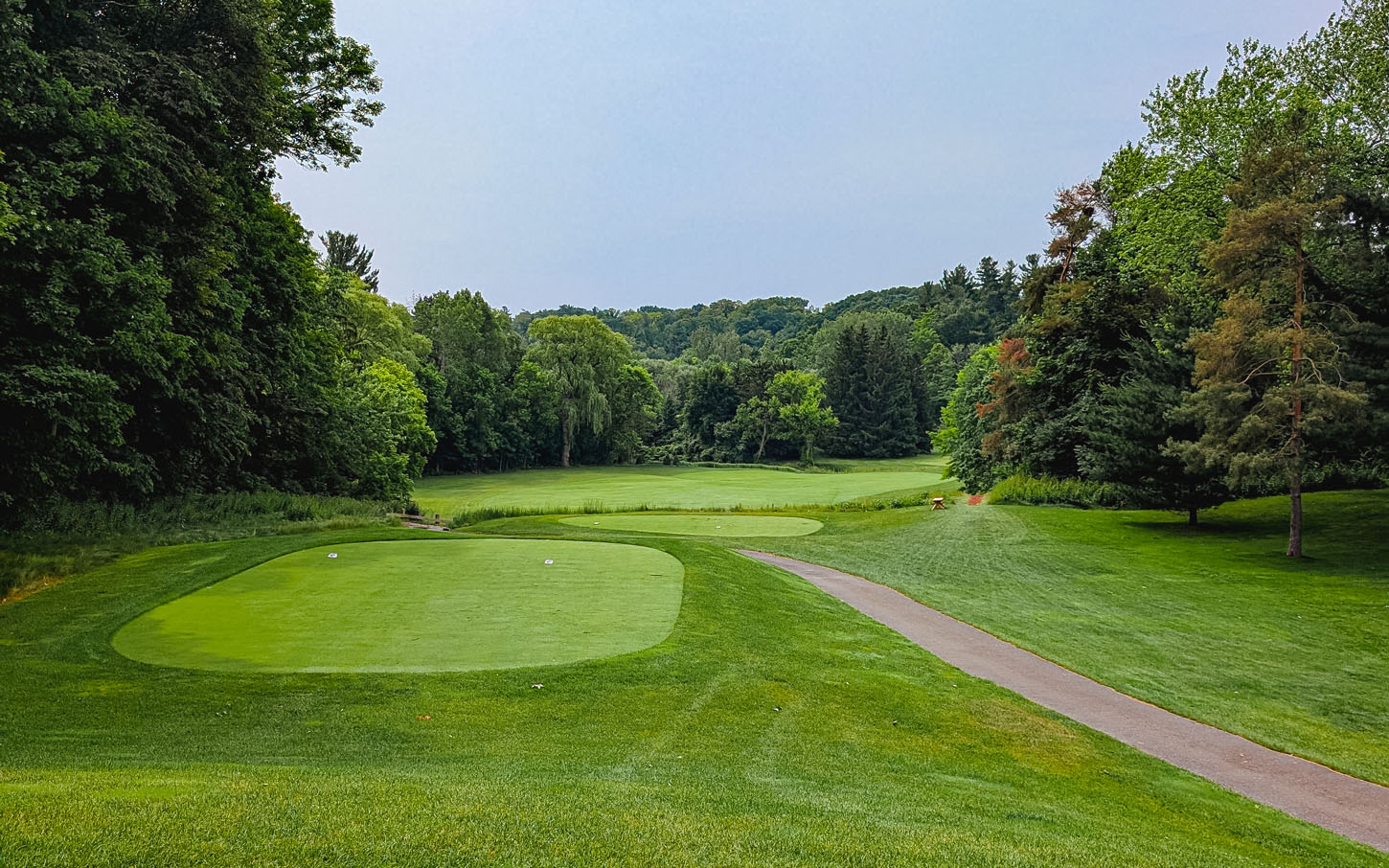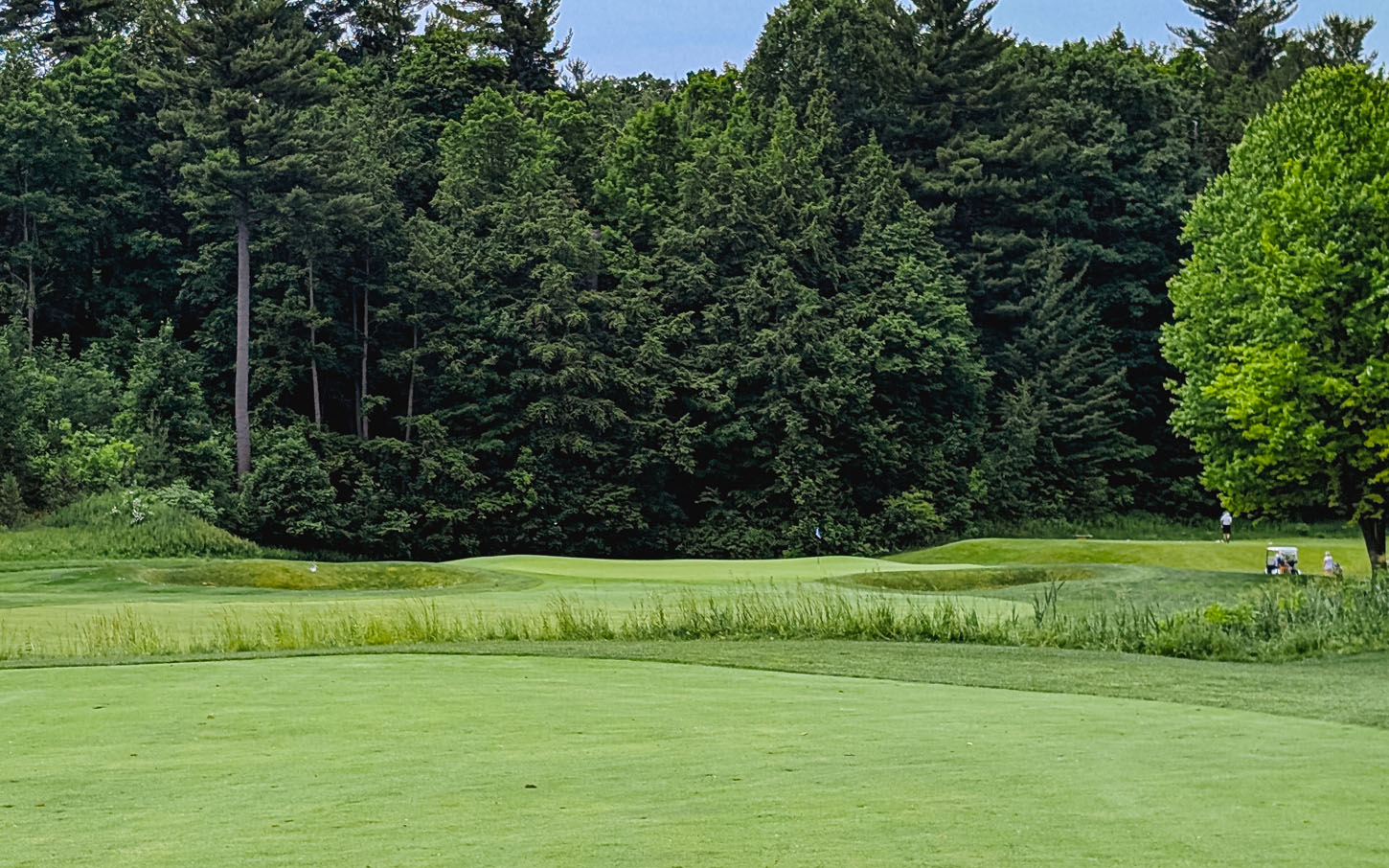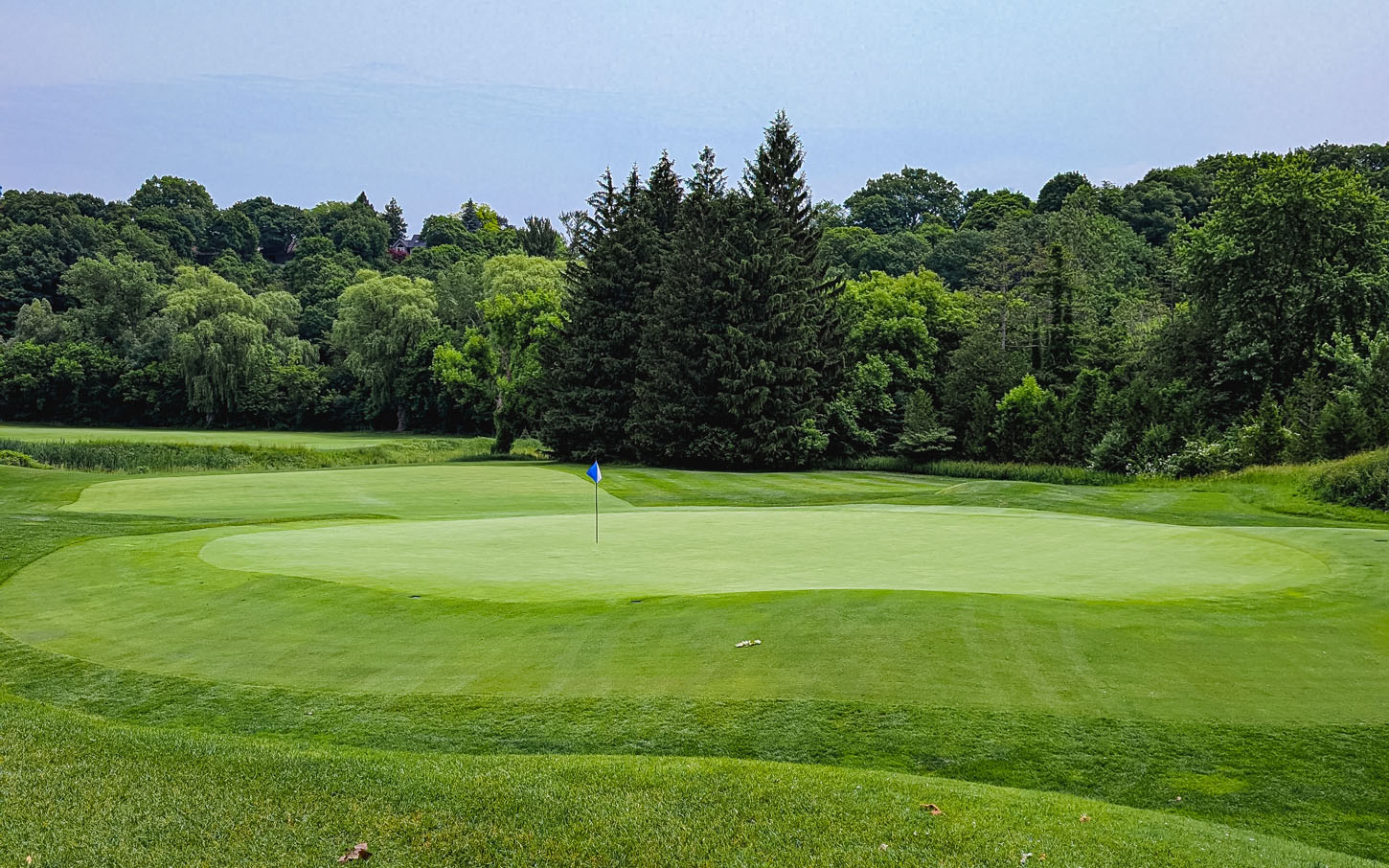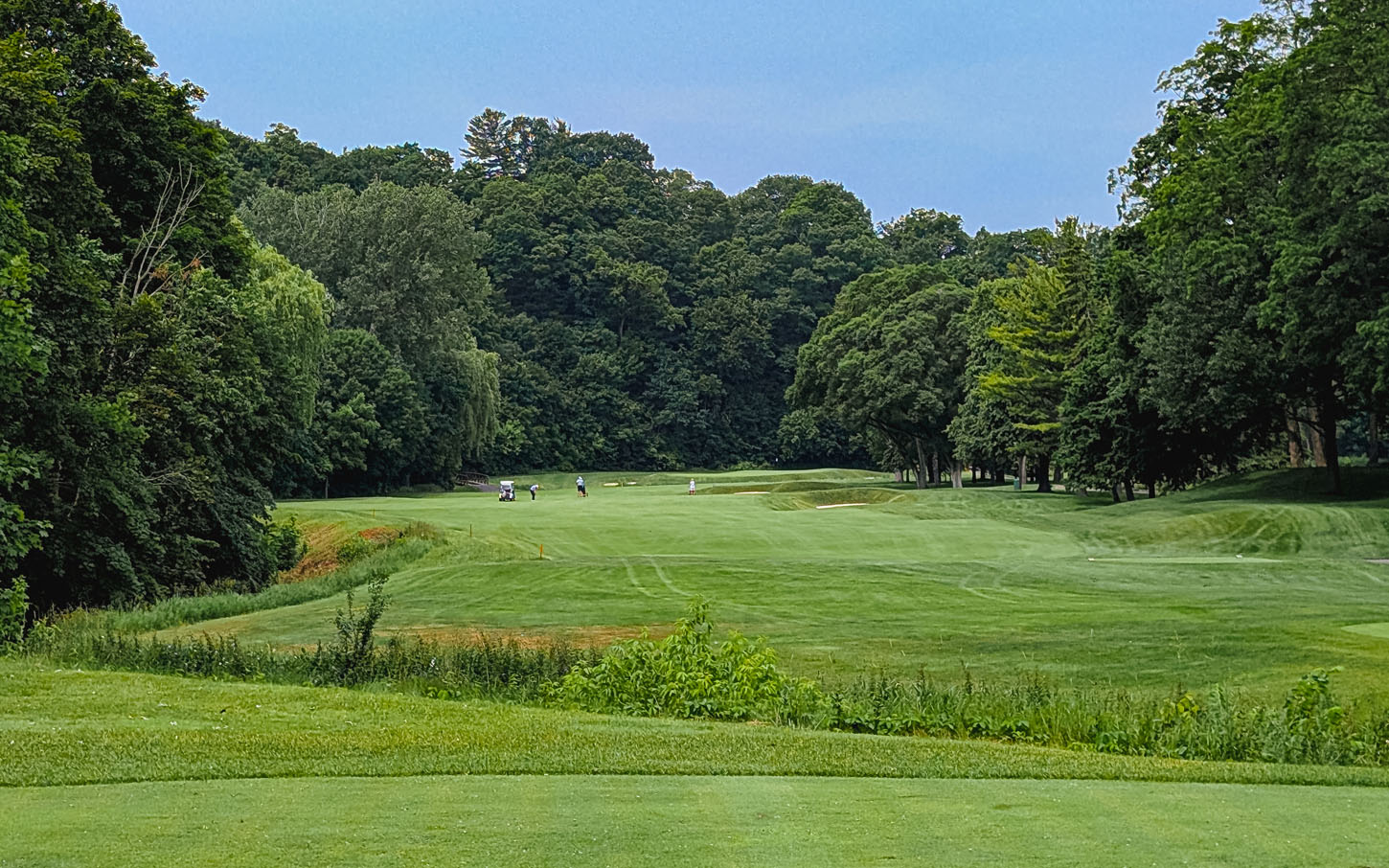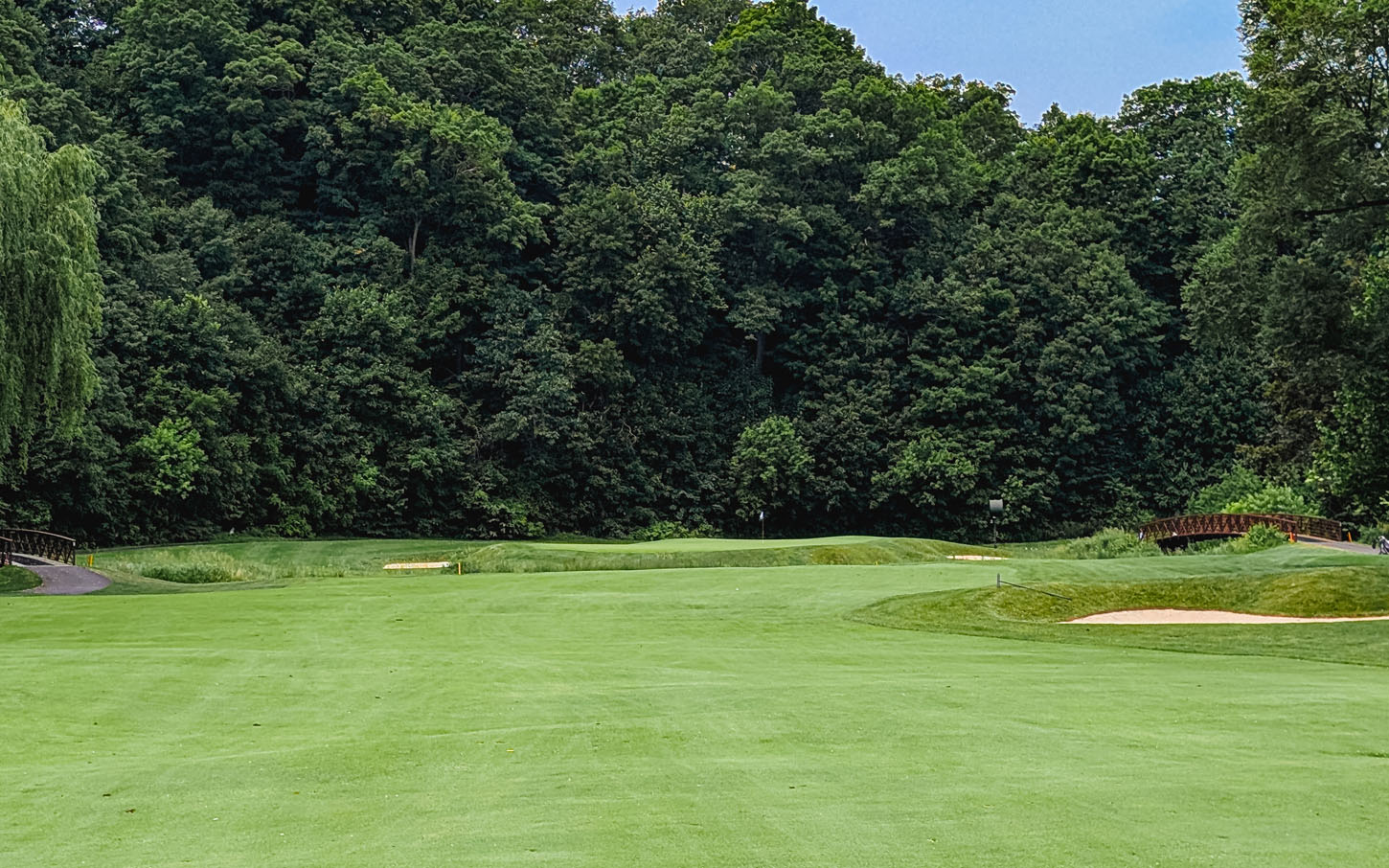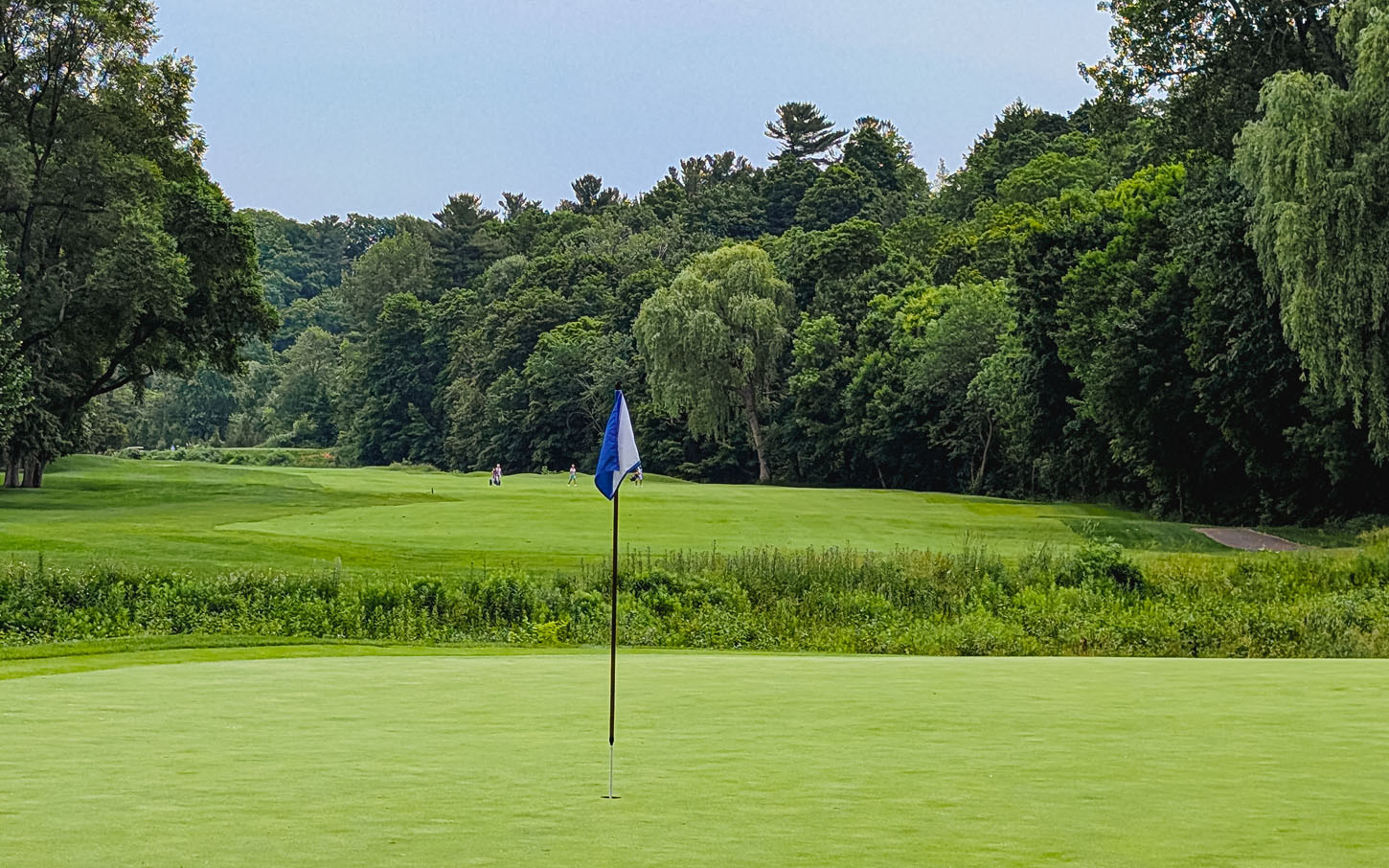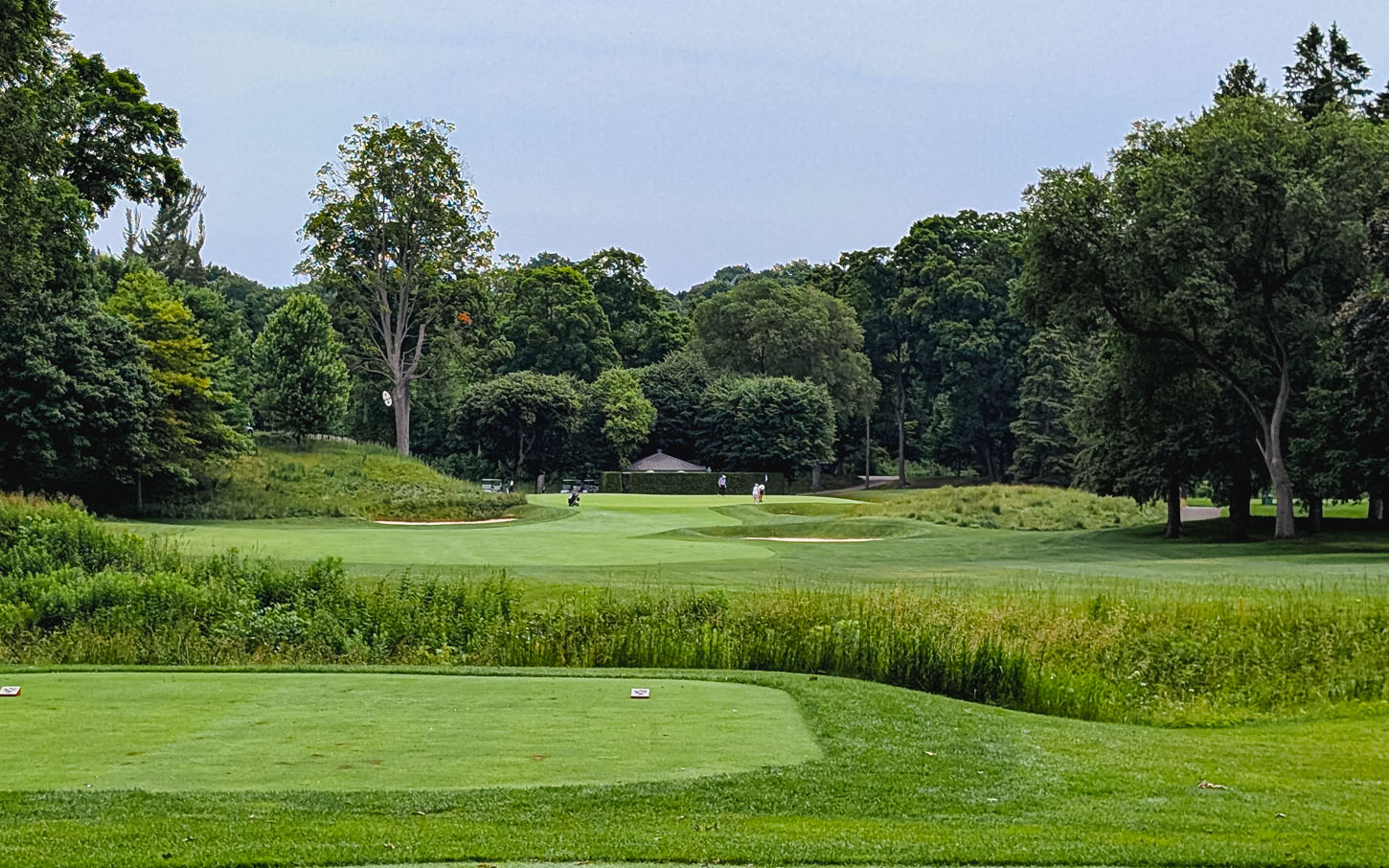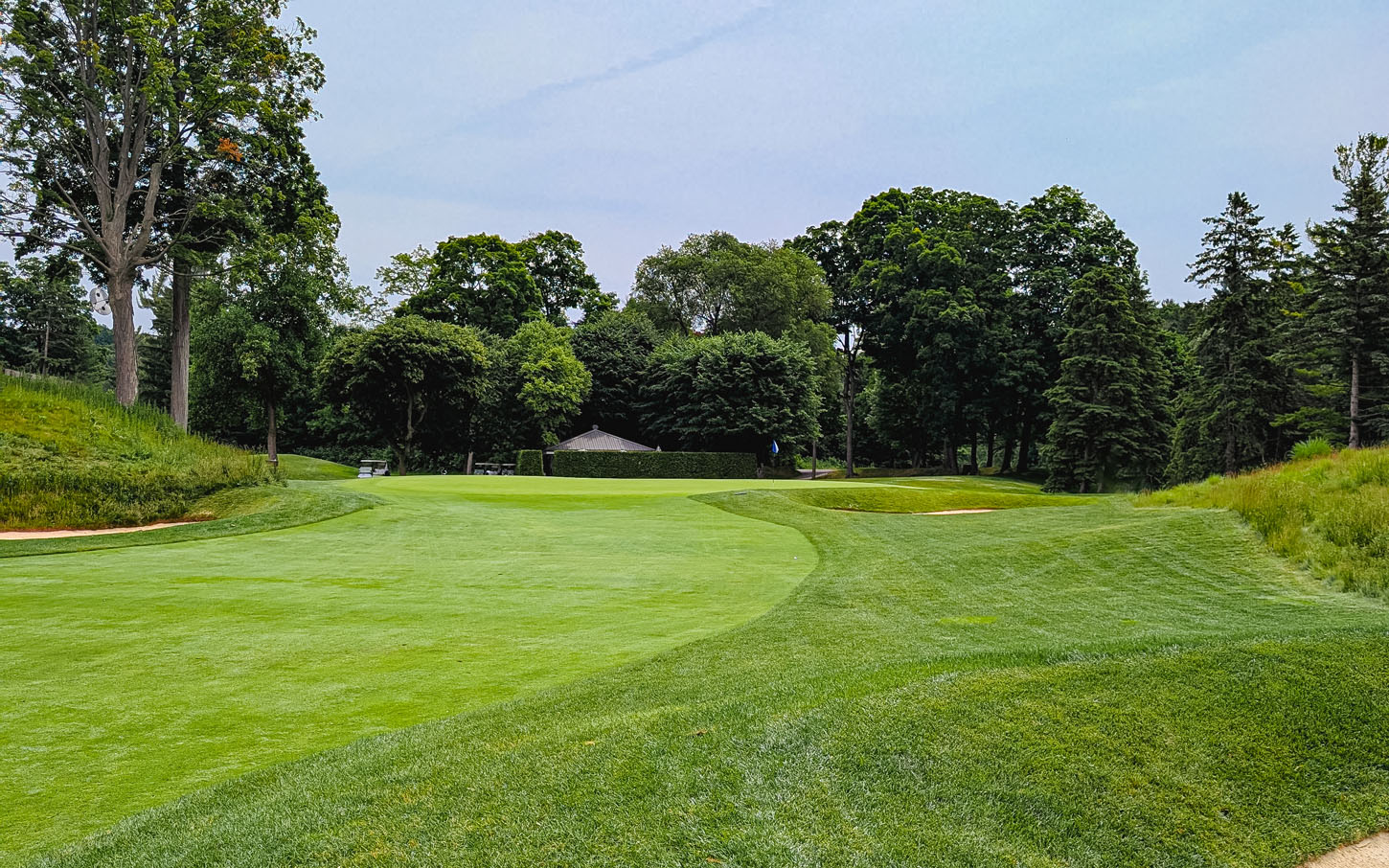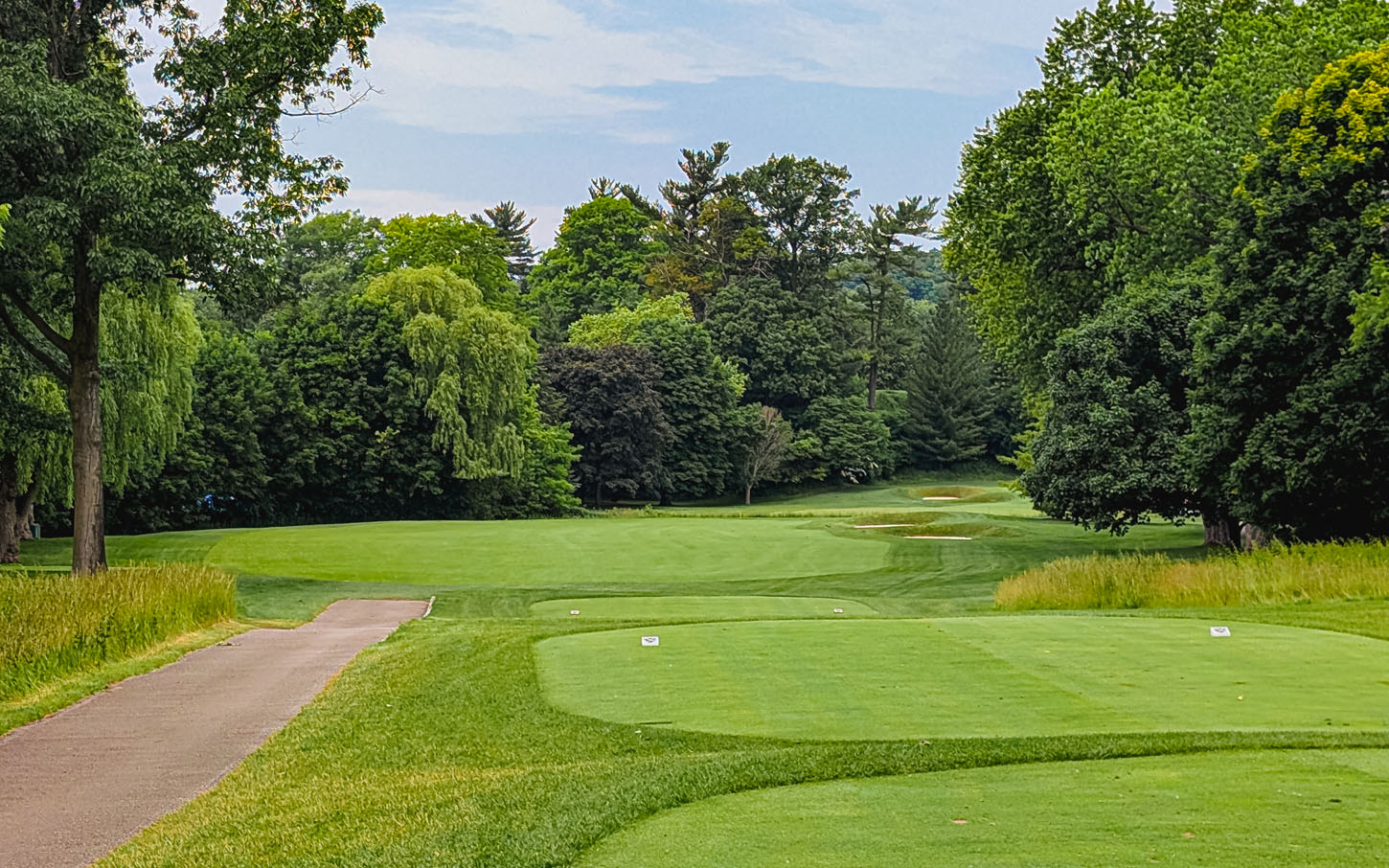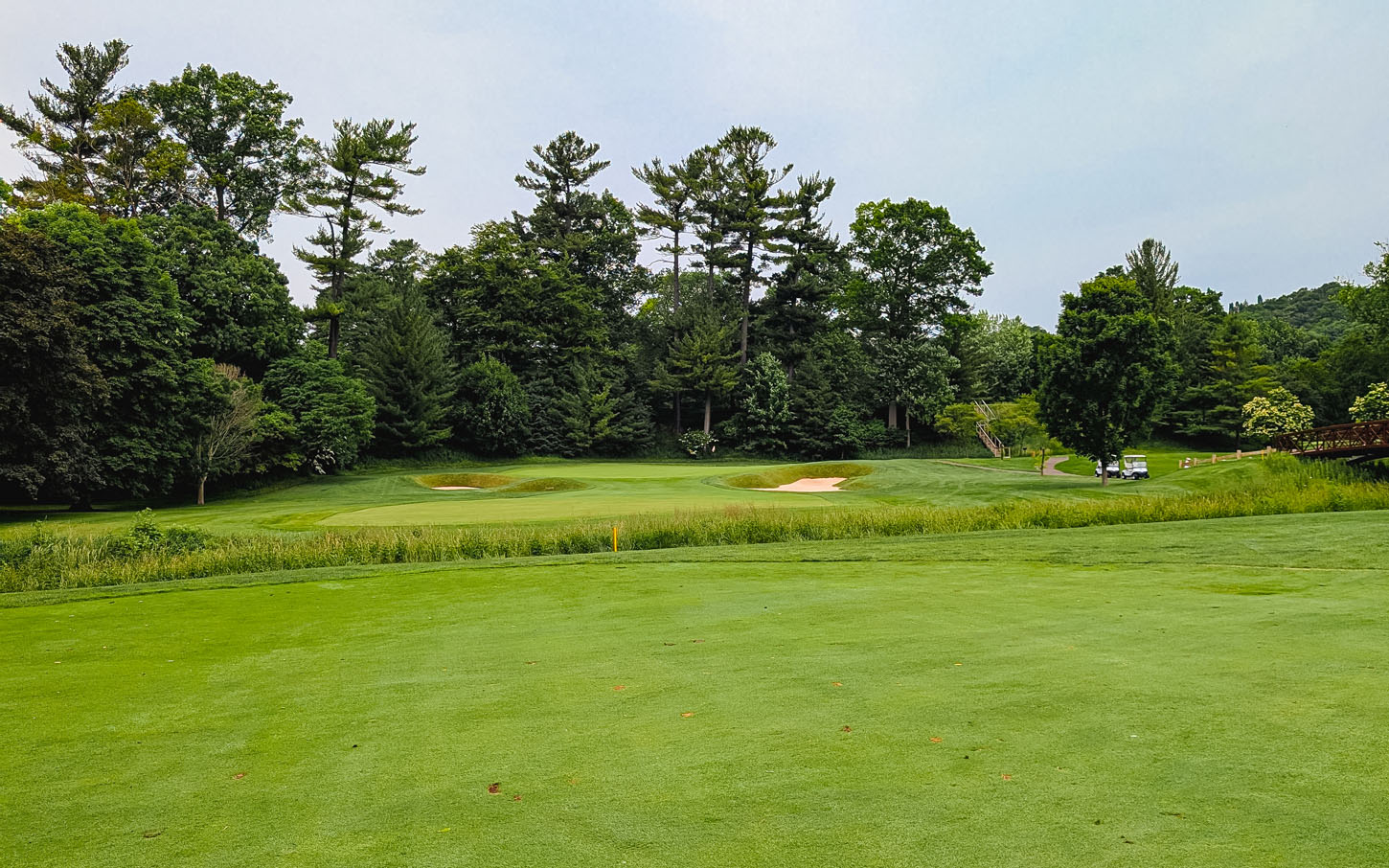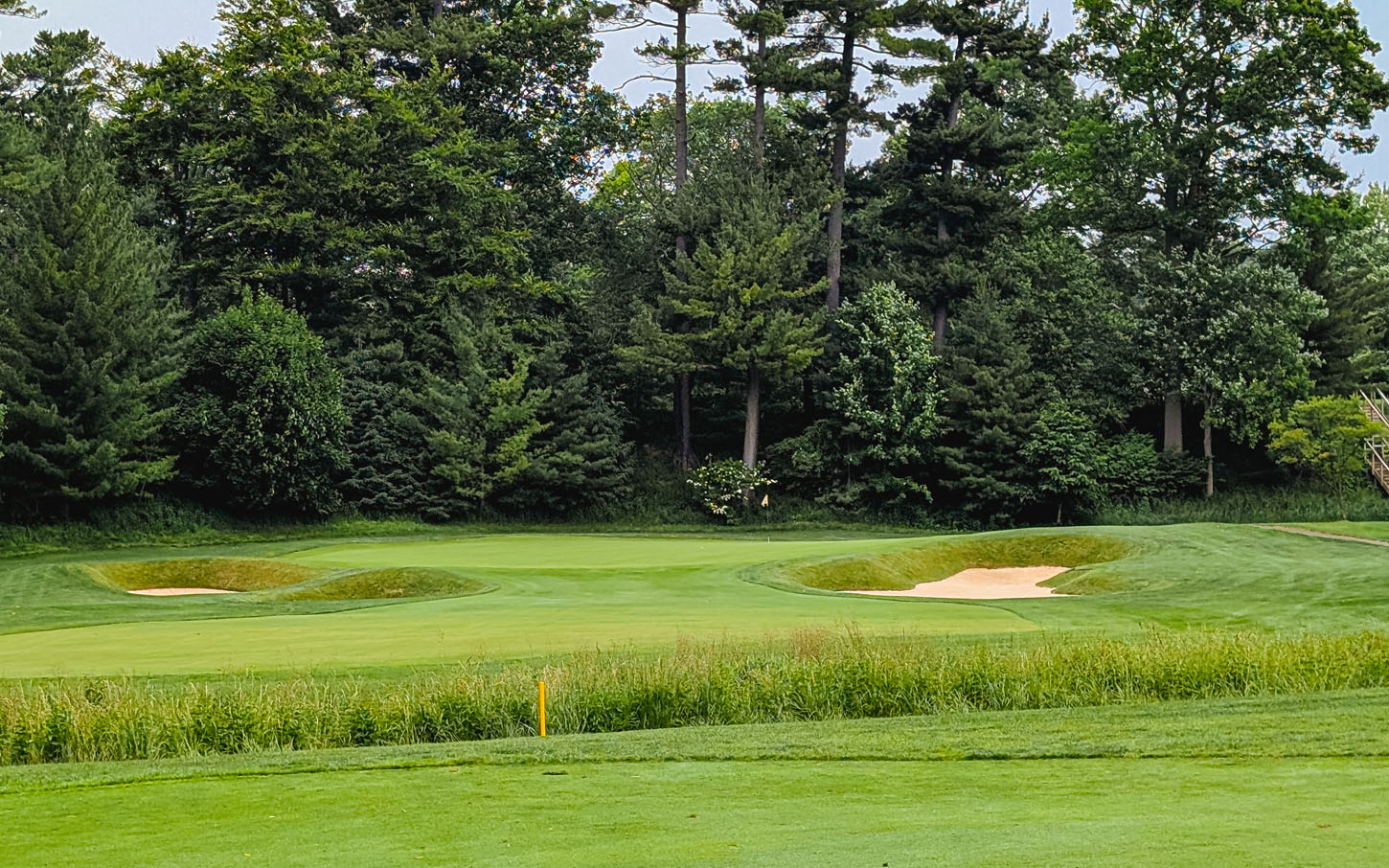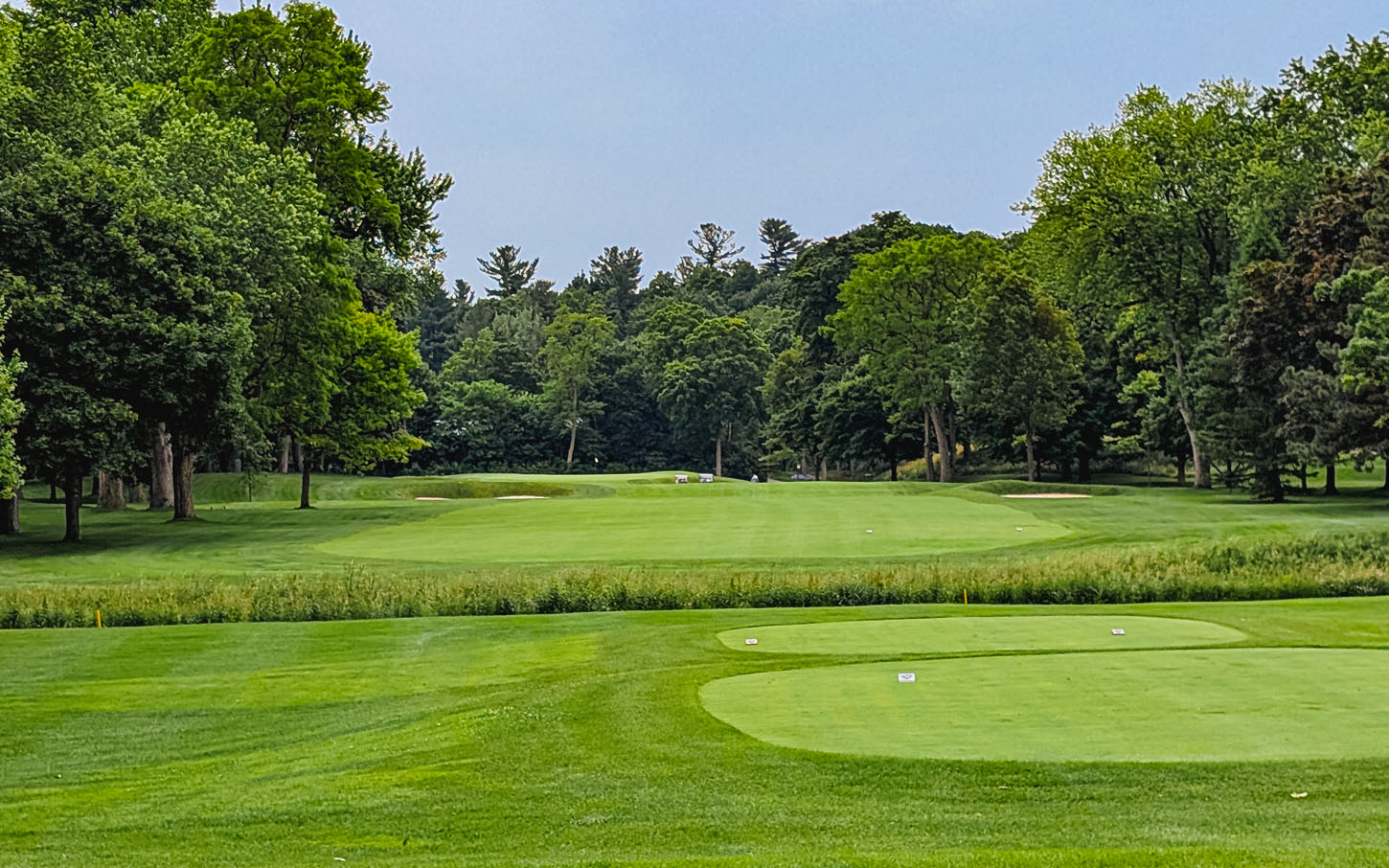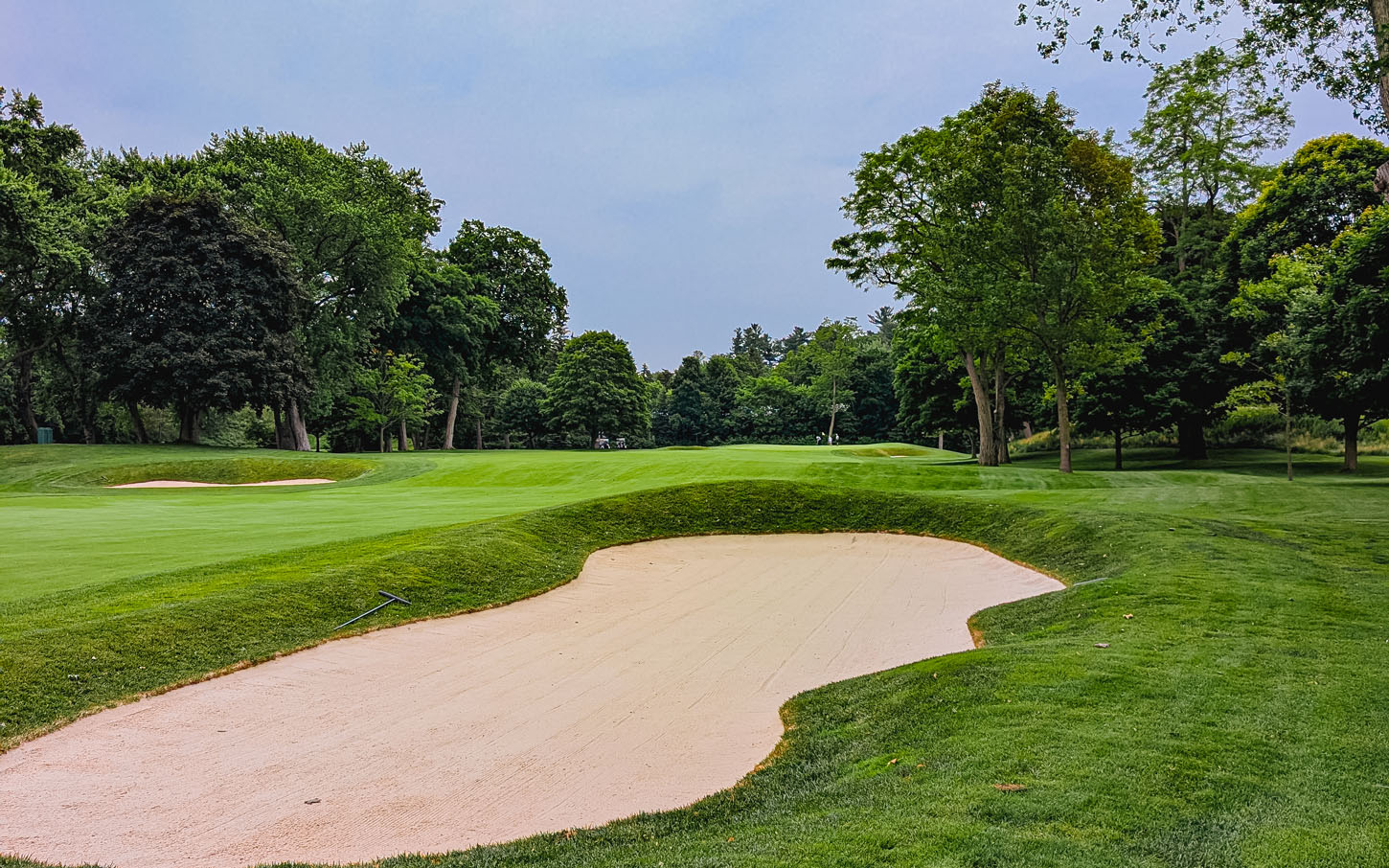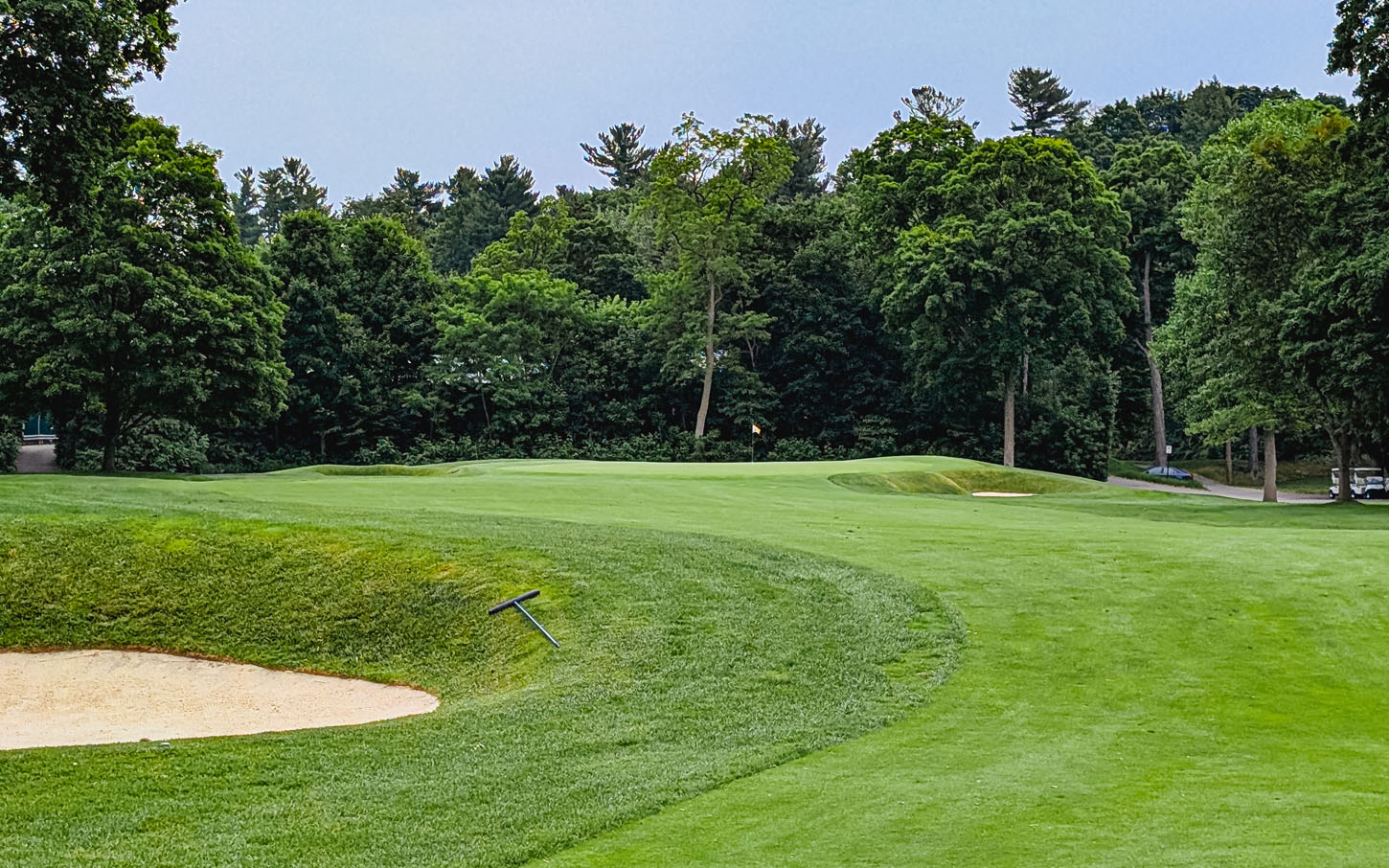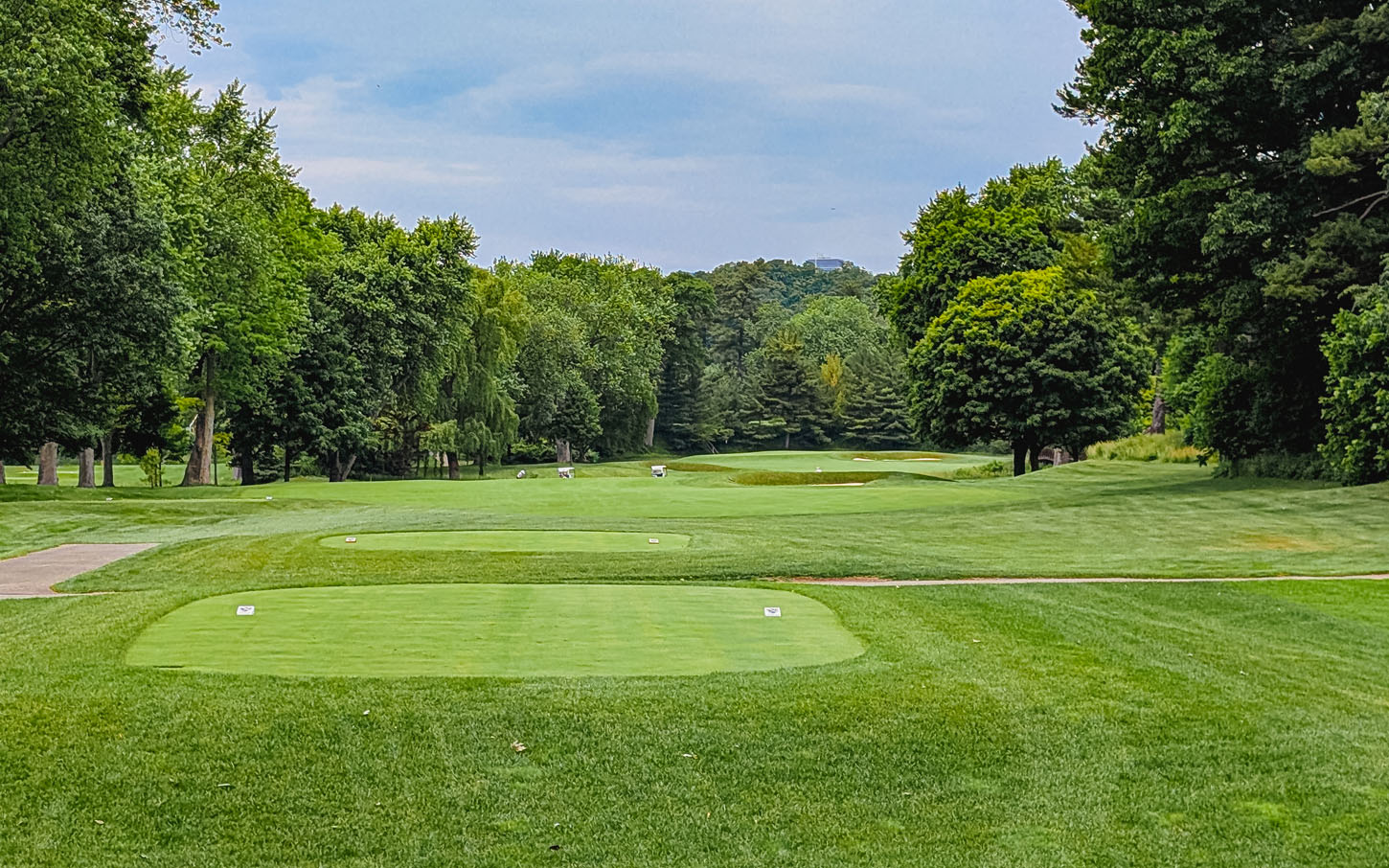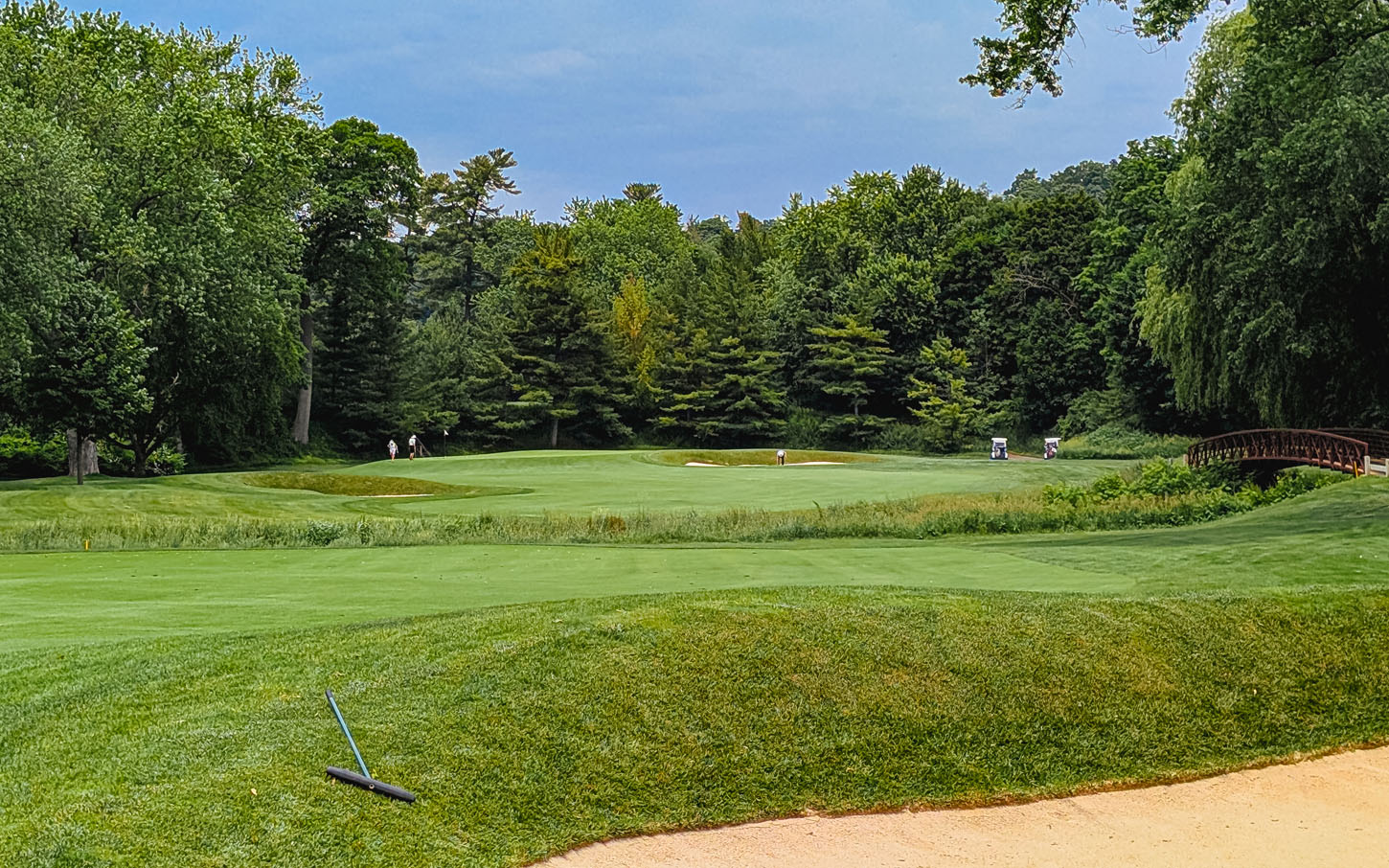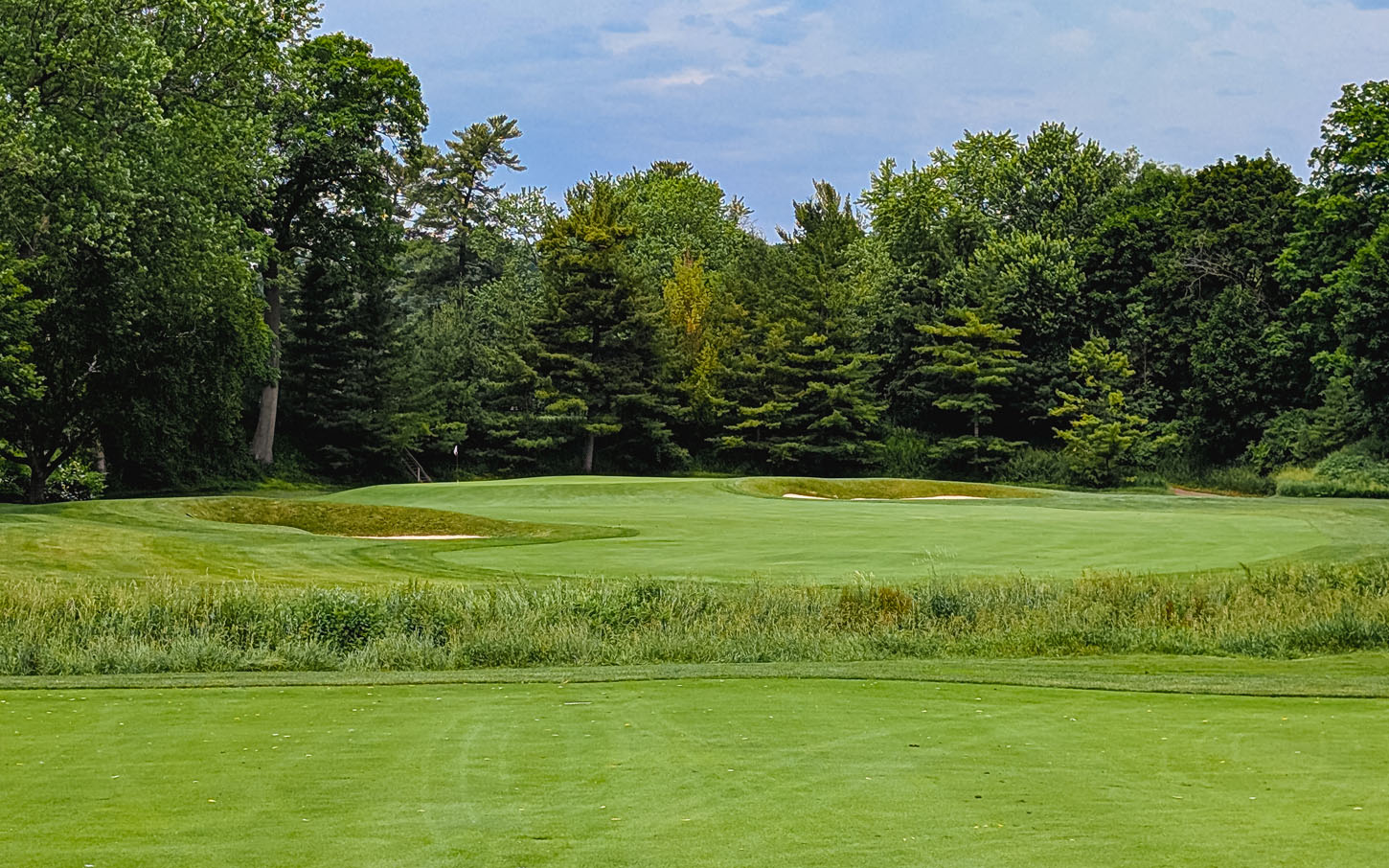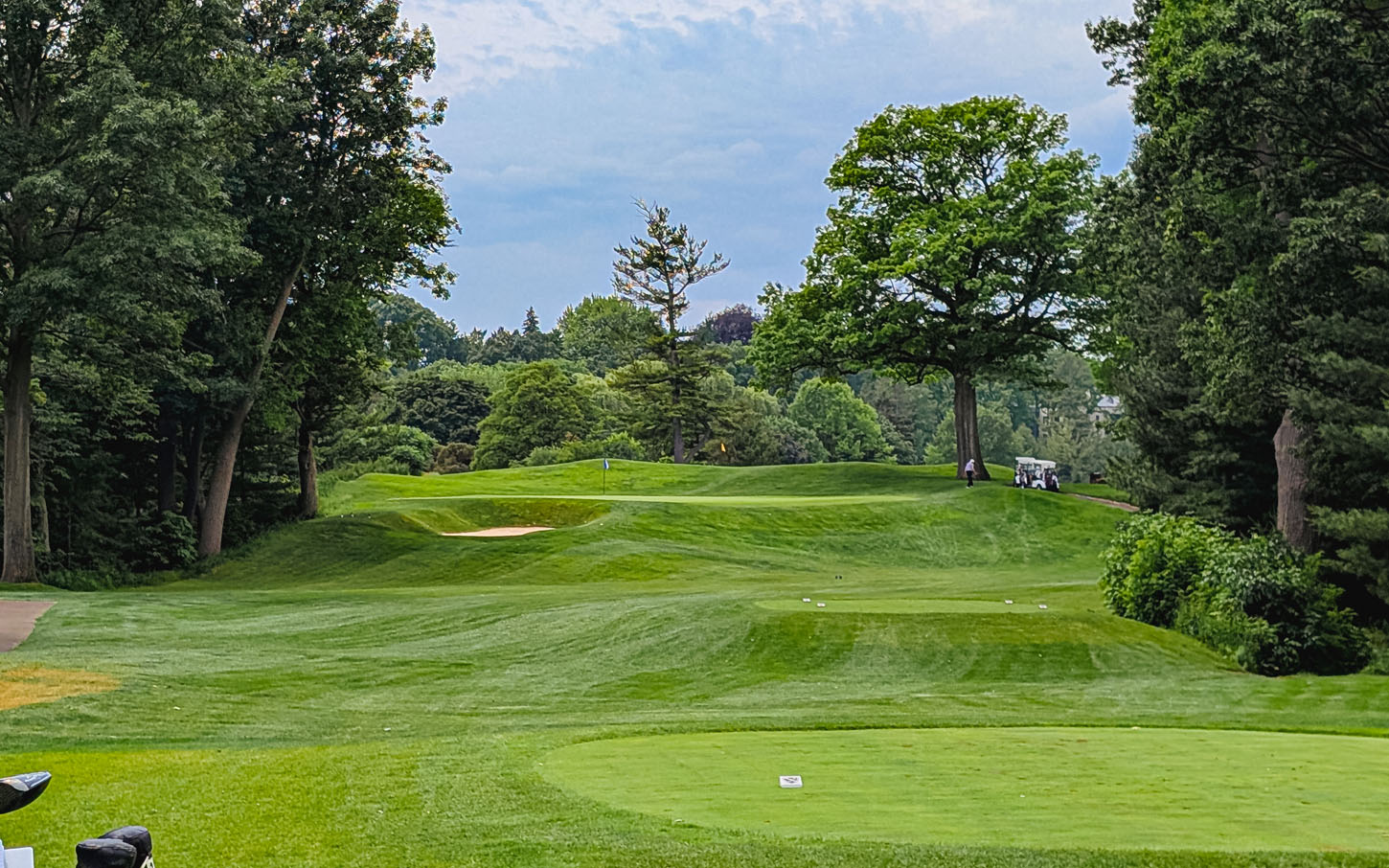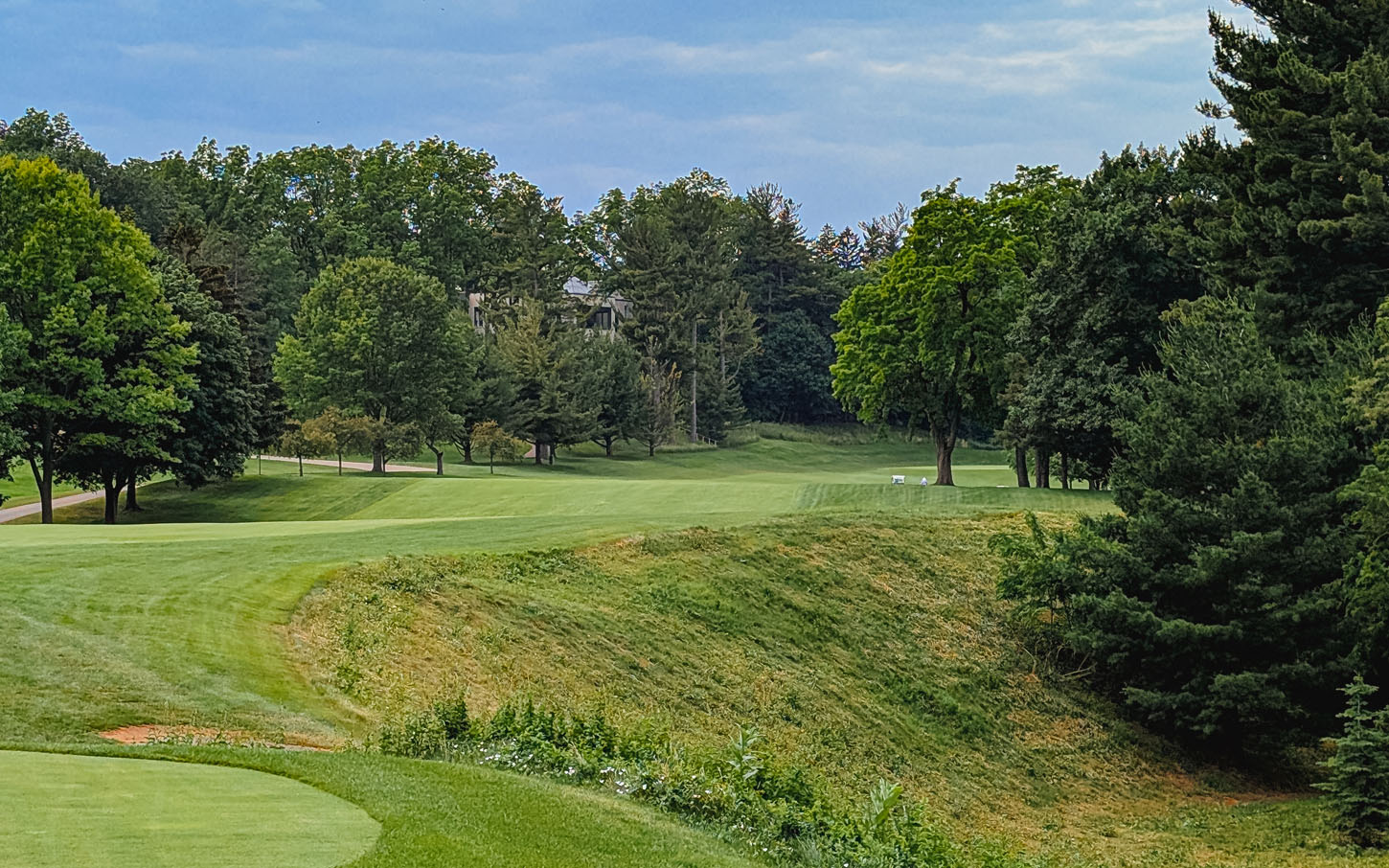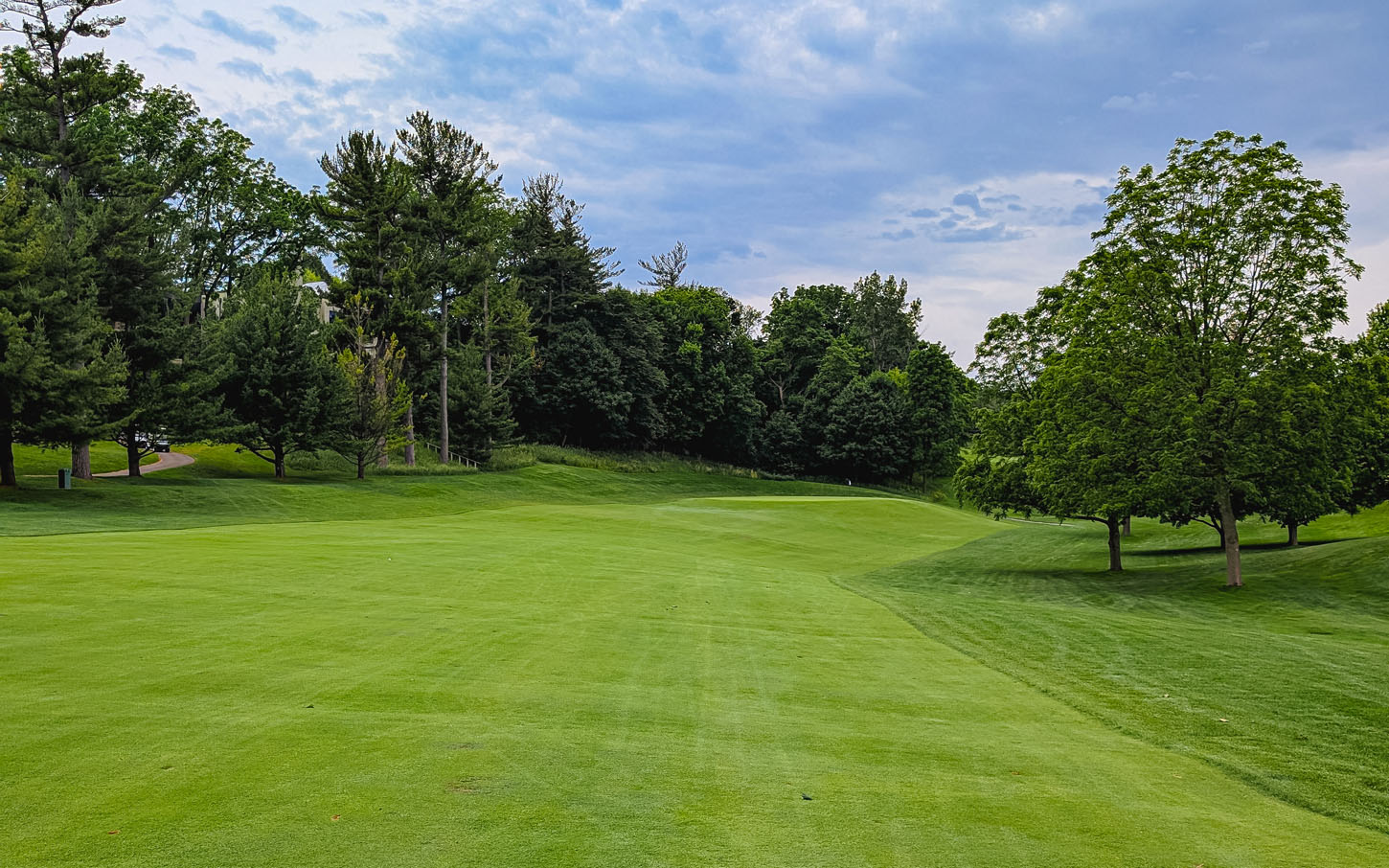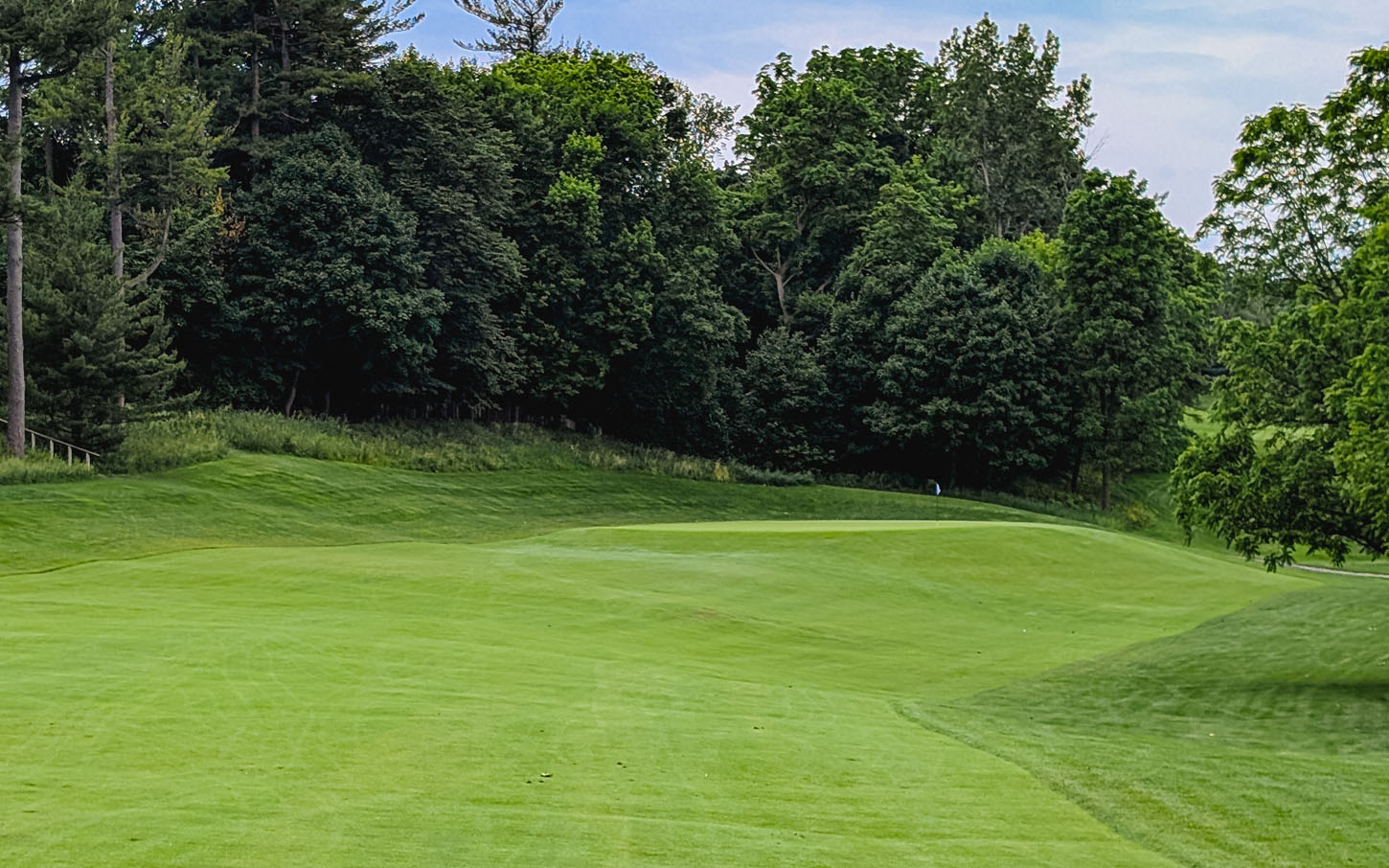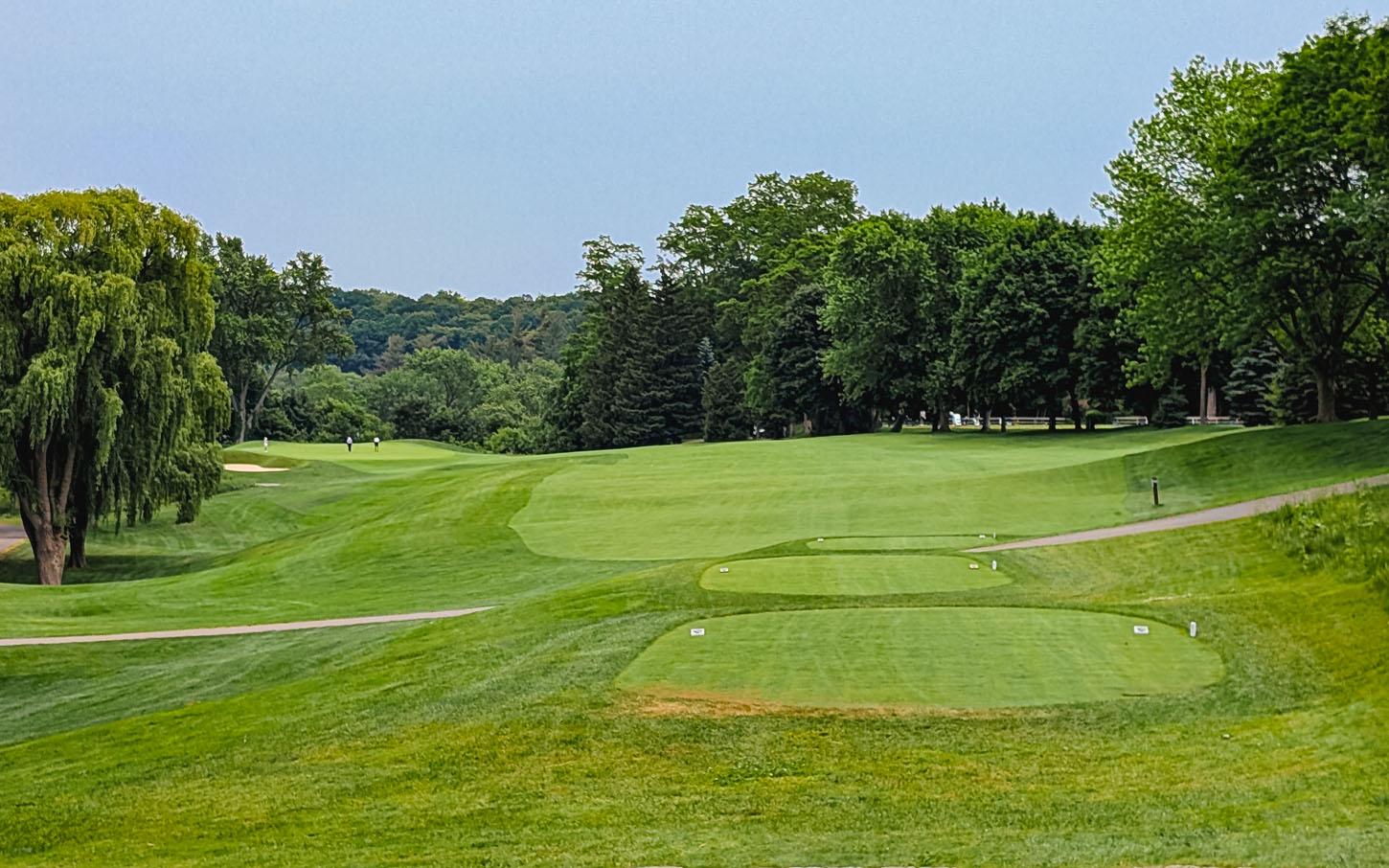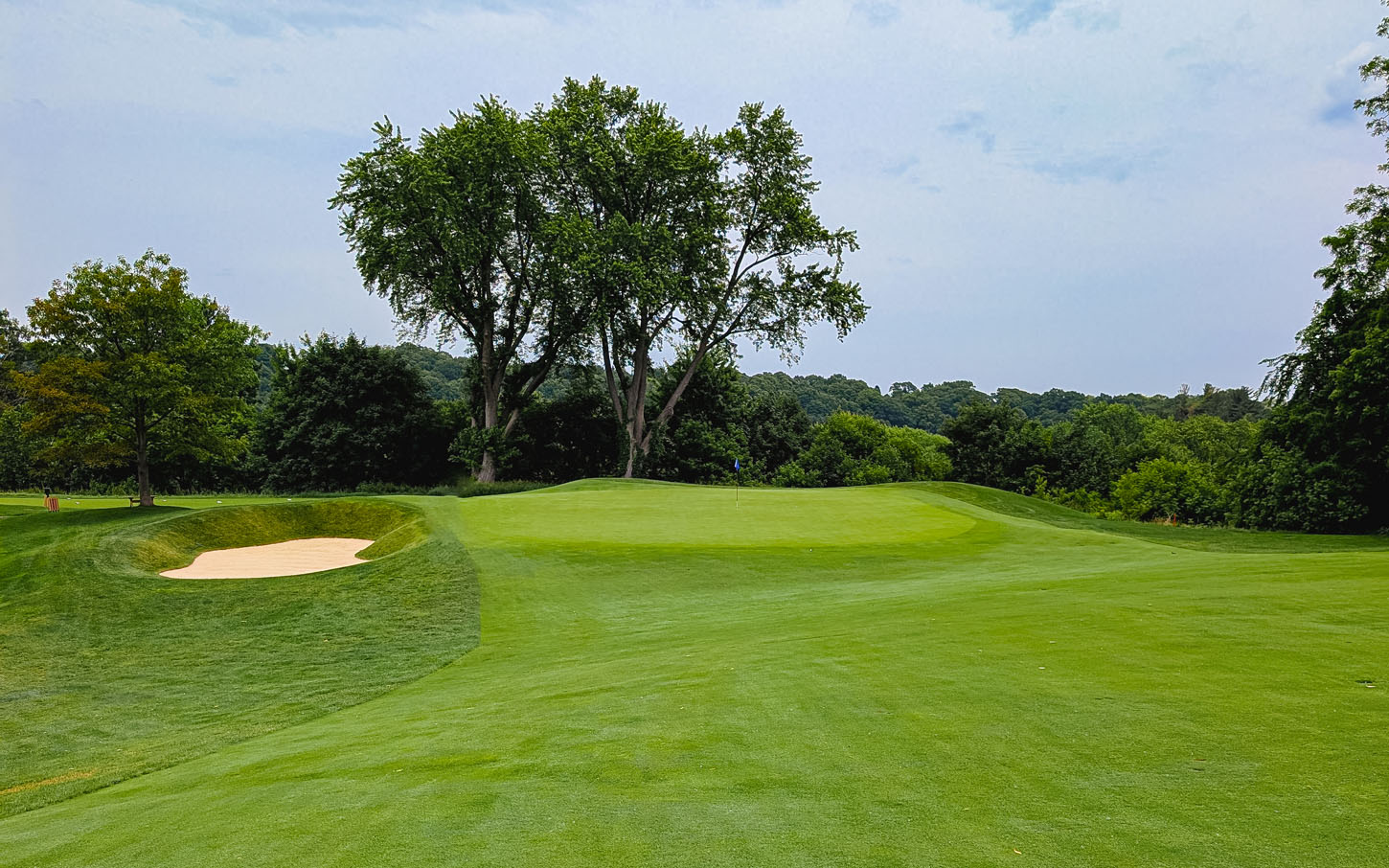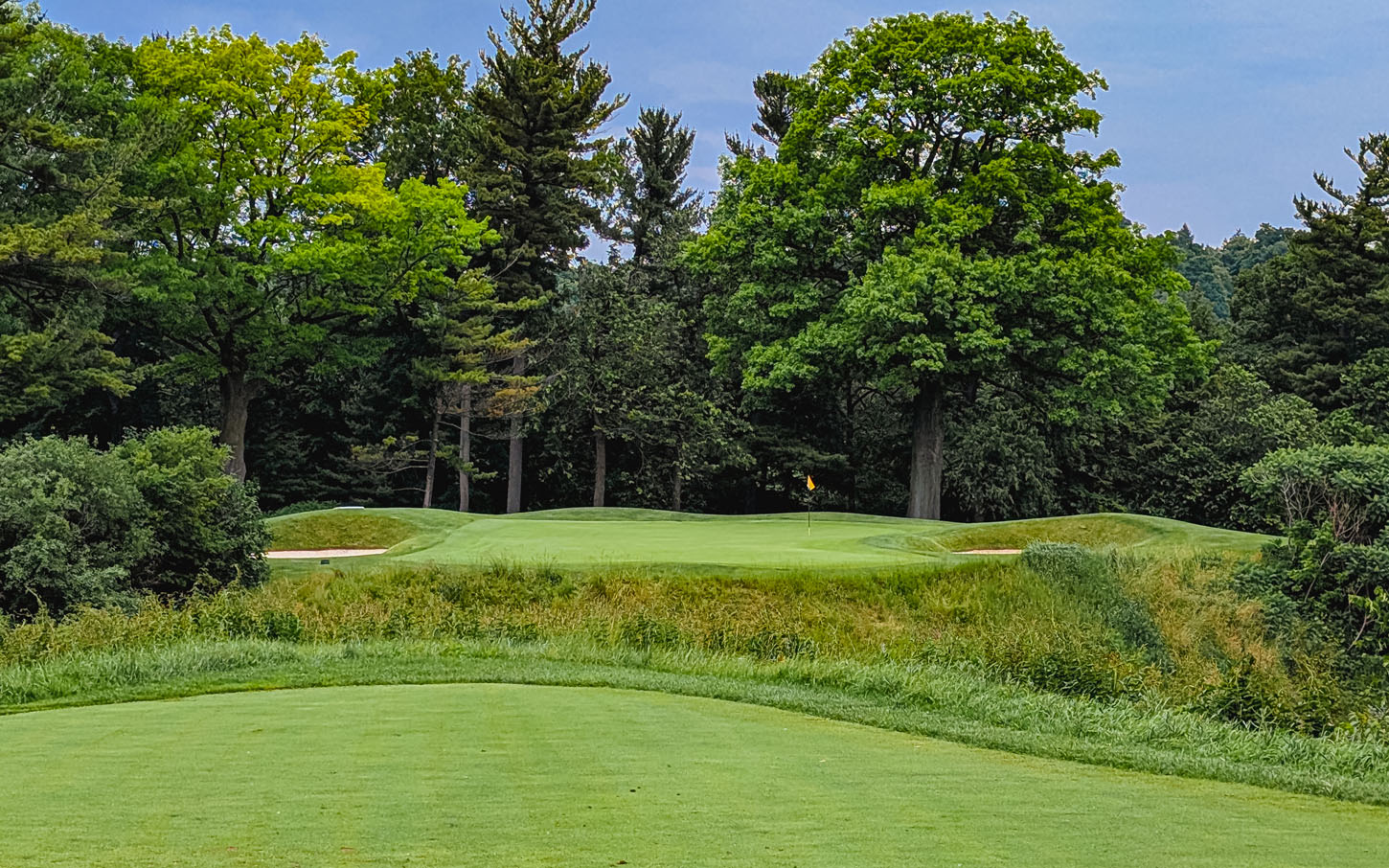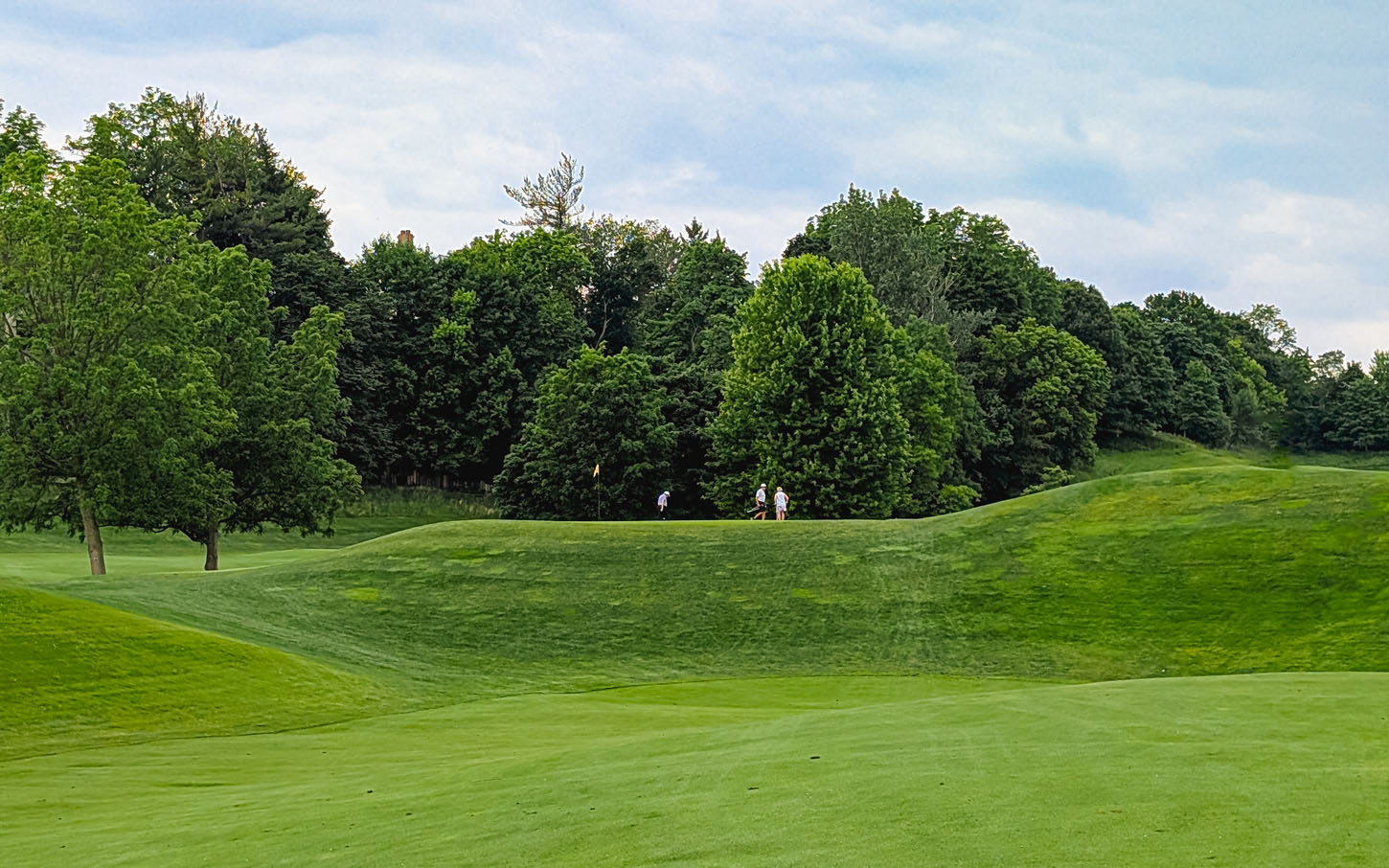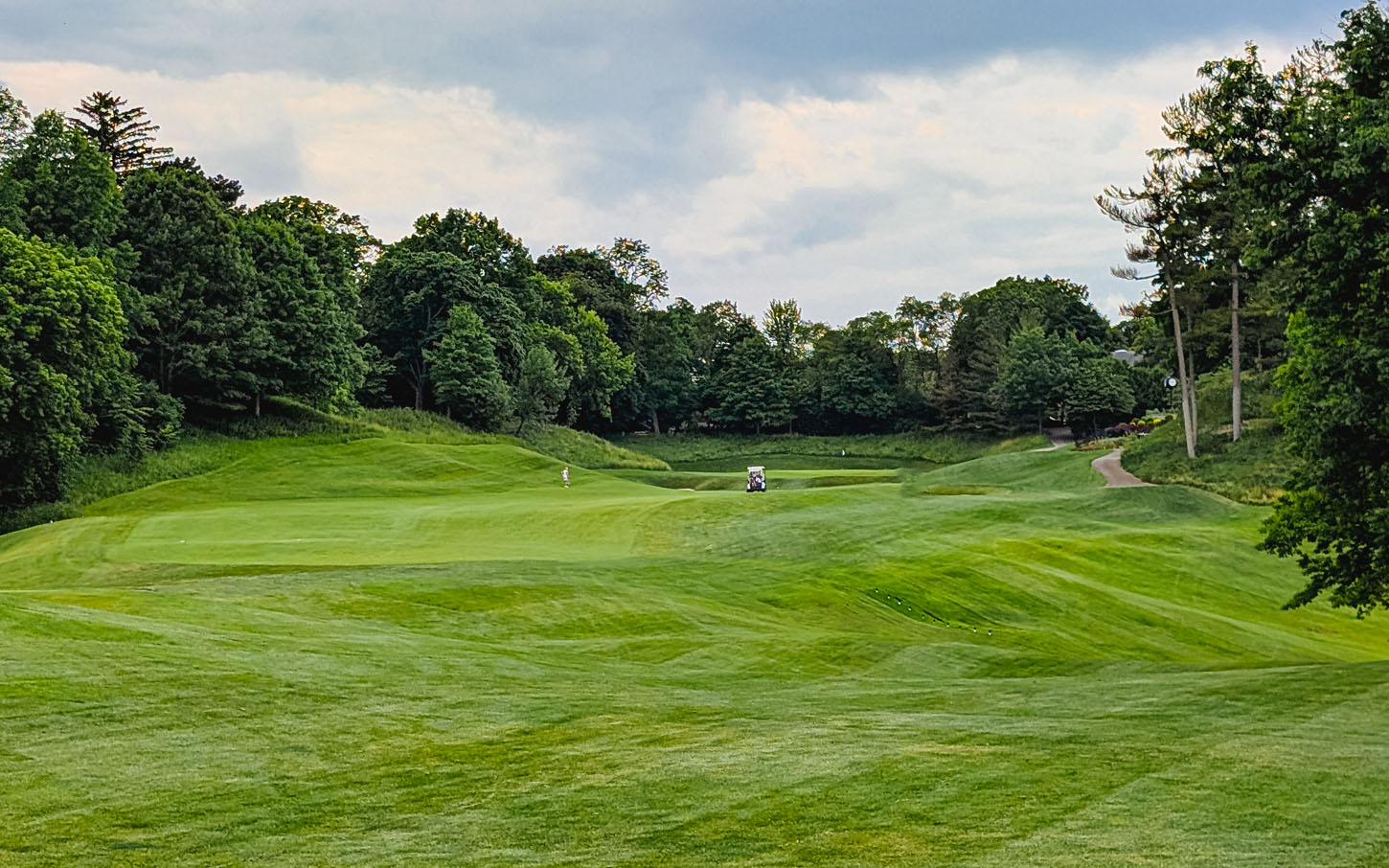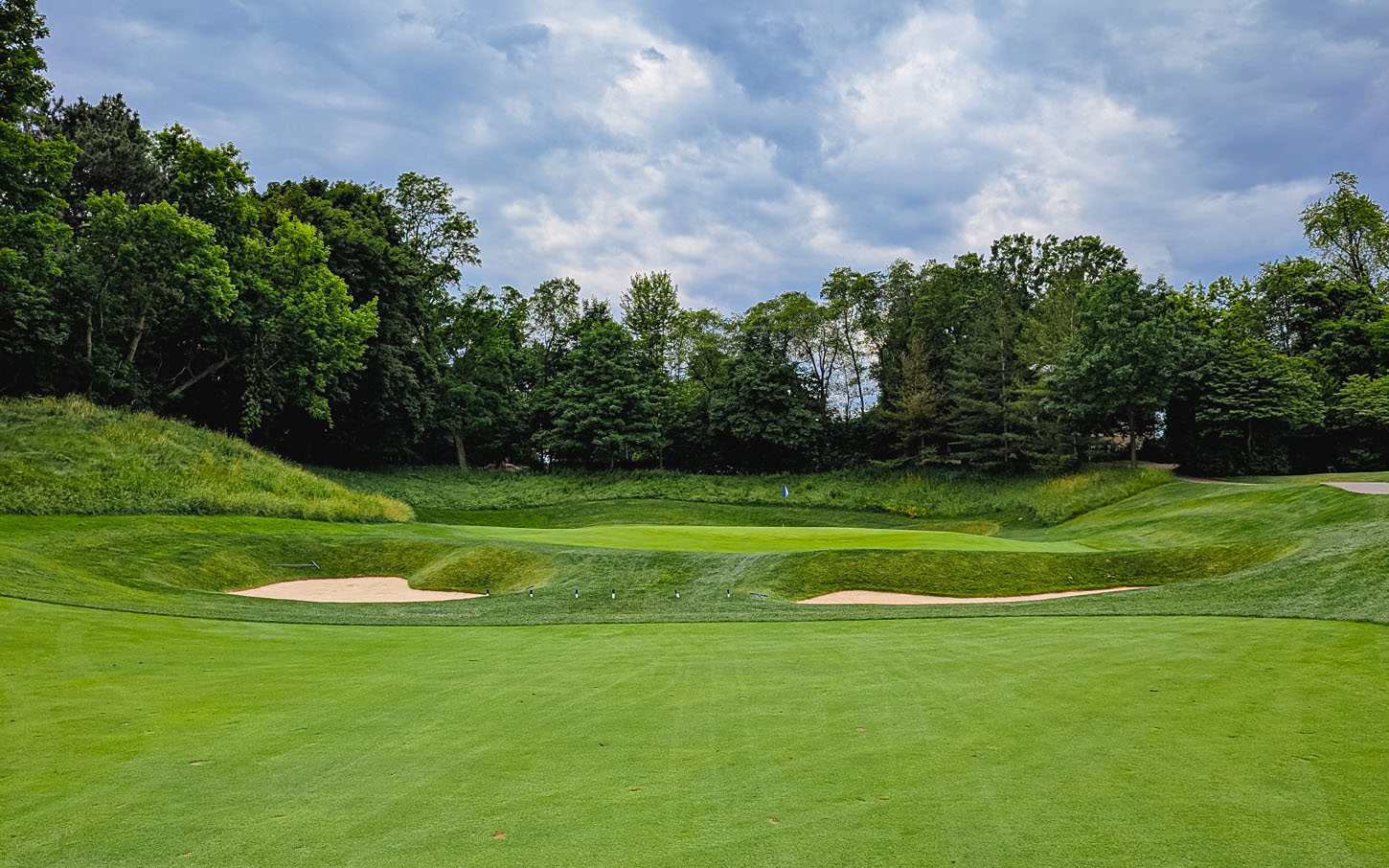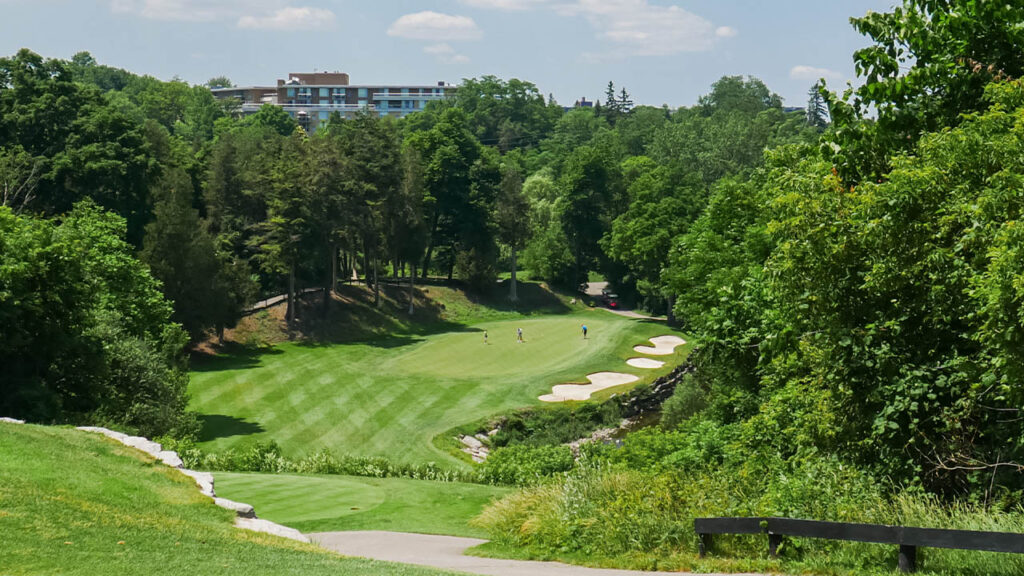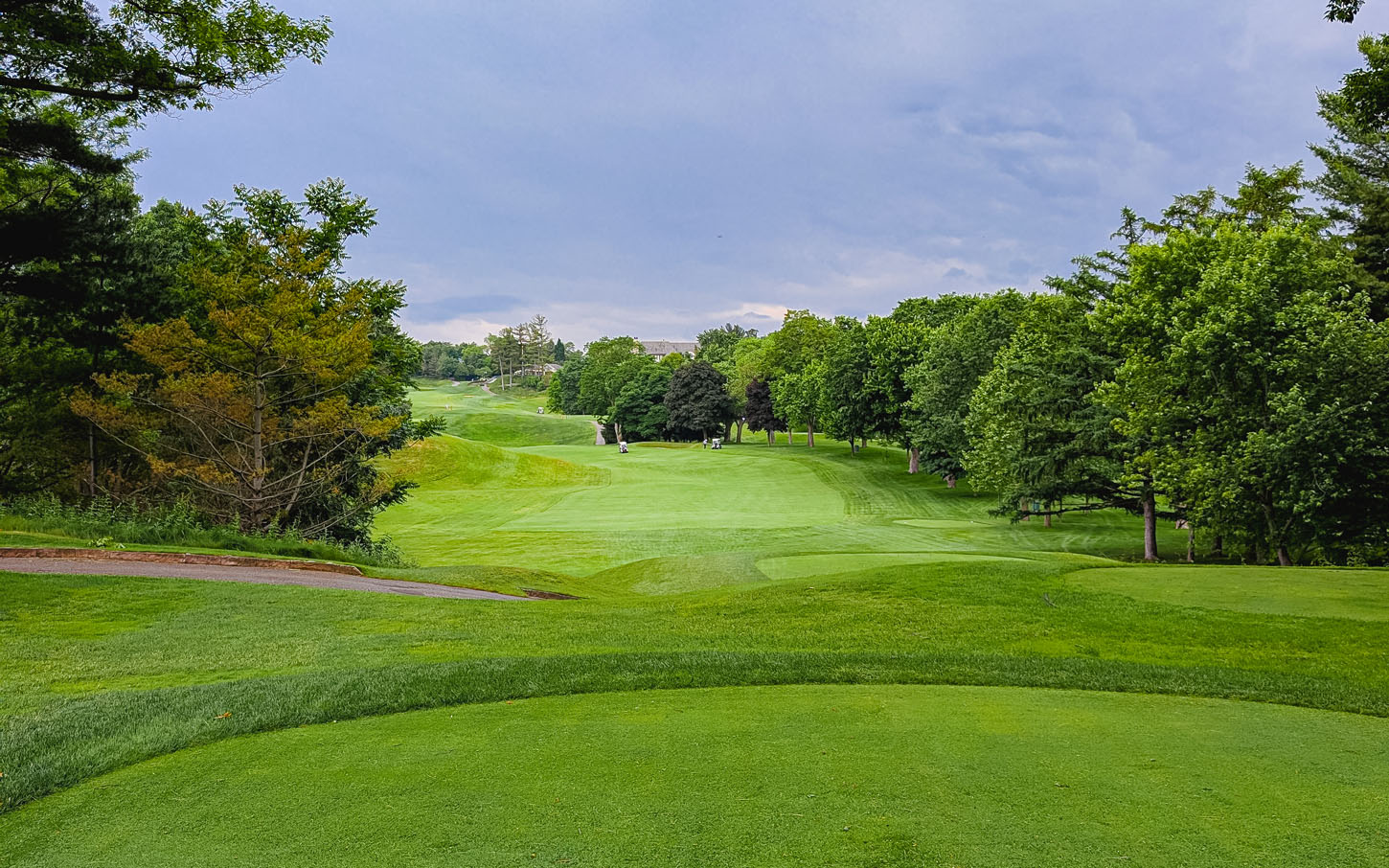
↑ The wonderful topography of Rosedale
Growing up in Richmond Hill, Ontario, they would often say I lived a long way from Toronto, but the city has vehemently approached. Now, it’s hard to delineate where Toronto ends and Richmond Hill begins. Living just off Bayview, Yonge Street was a five-minute walk from my home, a similar distance to get from Yonge to Rosedale Golf Club. And on one particularly hot and humid late spring morning this year I found myself cresting the first tee fresh off a TTC ride to the golf course.
#1: Origins In The Valley
Despite the never ending city that is Toronto, the century old, lush fairways of Rosedale feel worlds away.
Rosedale’s story begins not in the valley, but in Moore Park, where the club’s earliest members played on cleared farmland in the 1890s. It was a time when golf in Canada was still finding its footing and the game moved with the unhurried grace of the age. Rosedale was part of the foundation of Canadian golf, and its journey to the valley mirrors the evolution of the game itself.
By 1909, the club had moved to its current location, an undulating, tree-filled expanse of valley land nestled just north of downtown Toronto. The Don River winds its way through the property, defining not only the topography, but the personality of the course. It isn’t a manufactured setting. By all evidence it seems it was simply discovered, honoured, and gently sculpted. The land already has rhythm and all it needed was a steward.
That steward came in the form of Donald Ross.
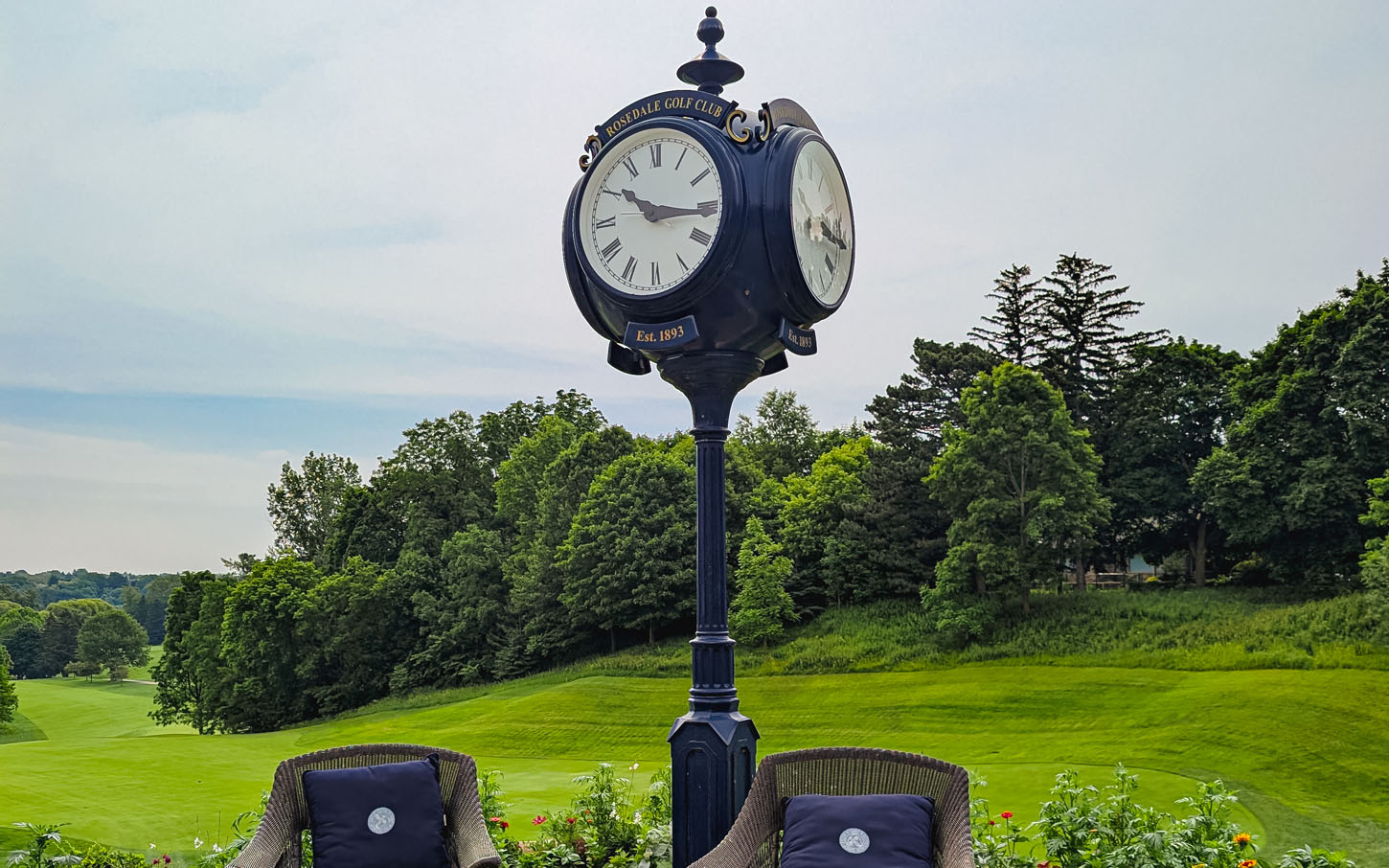
— Donald Ross —
The Scottish-born architect would ultimately leave his fingerprint on some of the most storied courses in North America. Ross arrived in 1919 and reimagined the original layout by Tom Bendelow, refining it with his signature attributes—routing holes with natural flow, protecting greens with bunkers, and letting the land speak loud.
Walking Rosedale today, I can feel Ross’s touch. The transitions between holes are seamless, the topography never forced. The routing feels inevitable, as if the course had always existed and simply needed to be uncovered. In many ways, the valley preserved not just a golf course, but a way of thinking about golf itself. Rosedale isn’t built on spectacle. It’s almost the antithesis of modern golf. It is a golf course that plays in quiet harmony with its surroundings as I imagine it did over a century ago.
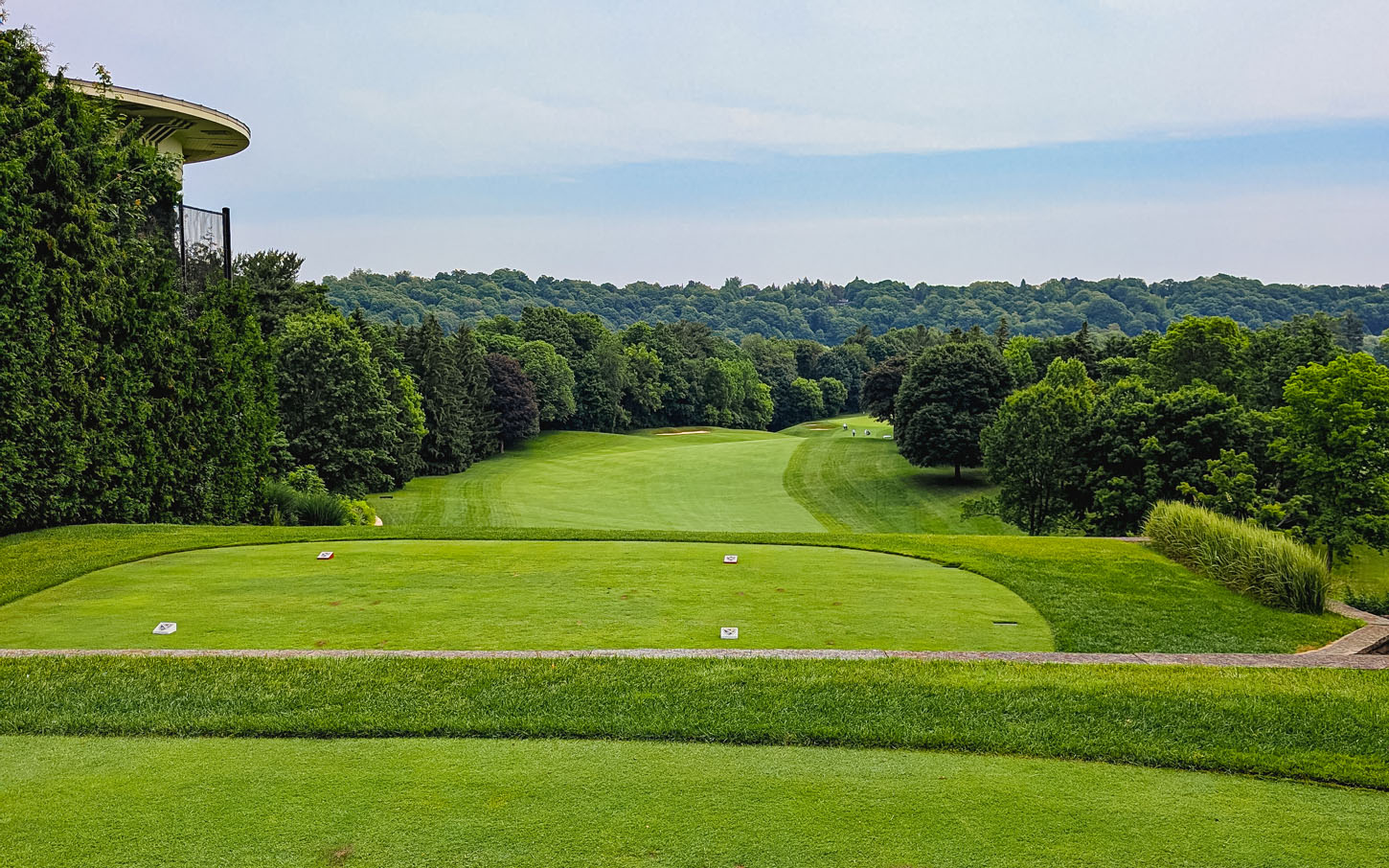
#2: Teeing Off Into The Past
Standing on the first tee, elevated above the fairway and just outside the pro shop doors, I could feel the weight of history raising my anxiety sky high as I did everything in my power to avoid a skied drive high into the sky. I could sense the heartbeat of the club. It is widely considered to be the most exclusive heartbeat hang outs in the city. It’s hard not to have a tremble in your hands wondering who is watching you take your first swing of the day even though barely a soul was around on an otherwise perfect weekend morning.
A long downhill drive awaits.
It’s poetic how the starting hole melds land and design to create one of the more memorable and fitting starting holes in all of golf. It is the start of a golf course that is timeless, without question. Something I quickly discovered on my trek post-first swing and breakfast ball sent directly into the right trees.
As I searched my way into the round—my golf ball playing hide-and-seek with me—the front nine revealed itself with gentle shifts in direction. The tumbling second hole that moves up, down, up, down and then up again. The third bending heavily left to right and up to a green with a ferocious false front. The gentle drop at the fourth and sixth, both par-3s, but different. Ultimately crossing and abuting the Don River at the seventh and eighth to conclude on a driveable par‑4 beckoning a bold tee shot.
Some say the heart of the course lies in the back nine. For this fortunate golfer, the heart of the course is it in its entirety.
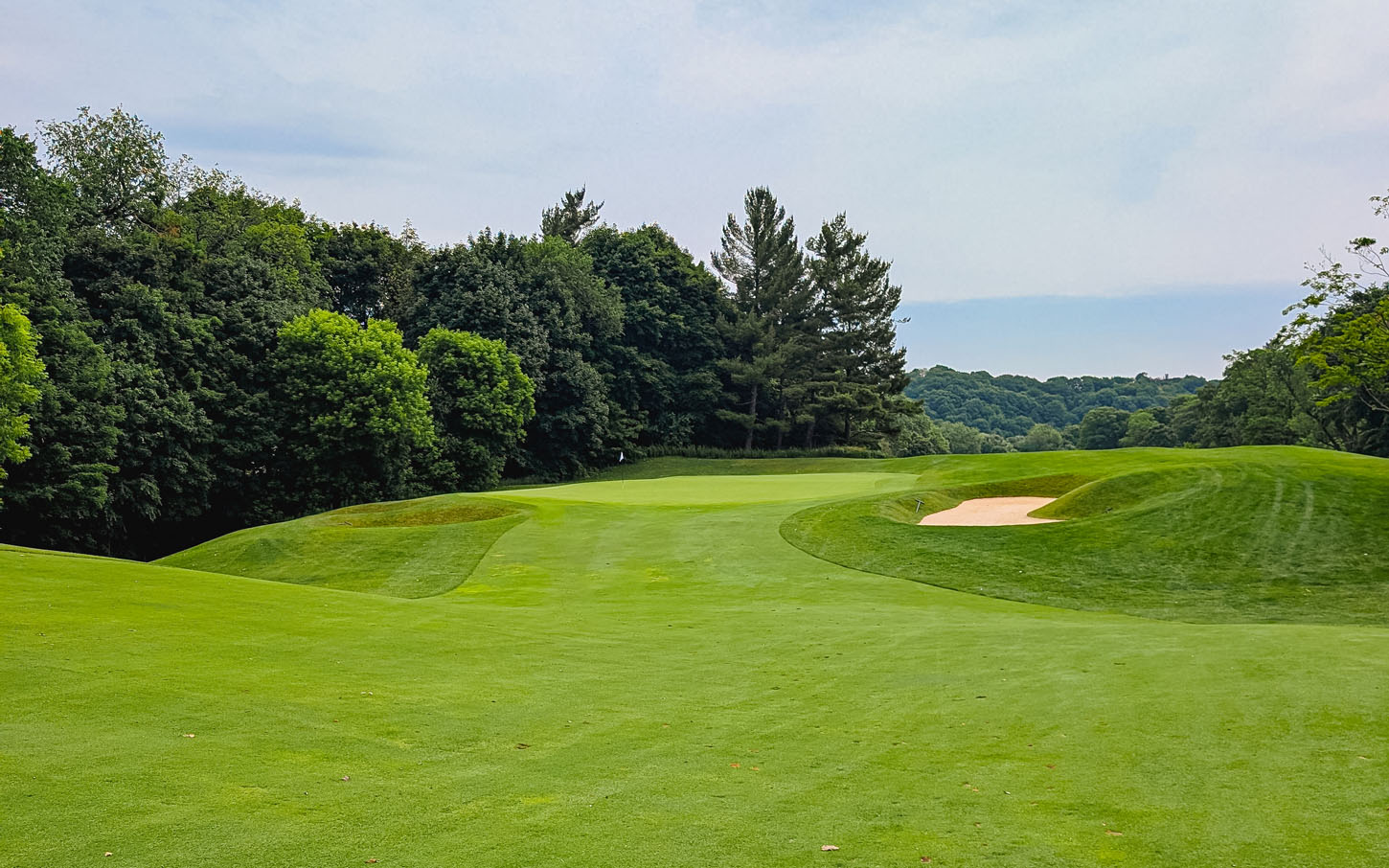
#3: Quiet Prestige In The City
Rosedale has hosted the Canadian Open twice—in 1912 and 1928—alongside amateur championships.
Nowadays, the private enclave seems to prefer quiet tradition over pro competition. It’s often said the best have others sing their praises. Rosedale’s praises are sung quite loudly by those who are lucky to take divots on its fairways. It is, after all, one of Canada’s most prestigious classic courses. One of the few touched by Donald Ross north of the border. One that is highly respected by golf purists that is able to be quietly tucked into Midtown Toronto. And that’s saying a lot as nothing is quiet in Toronto.
For all its prestige, Rosedale has never tried to be something it’s not. It never outgrew its origins. And maybe that’s what makes it special.
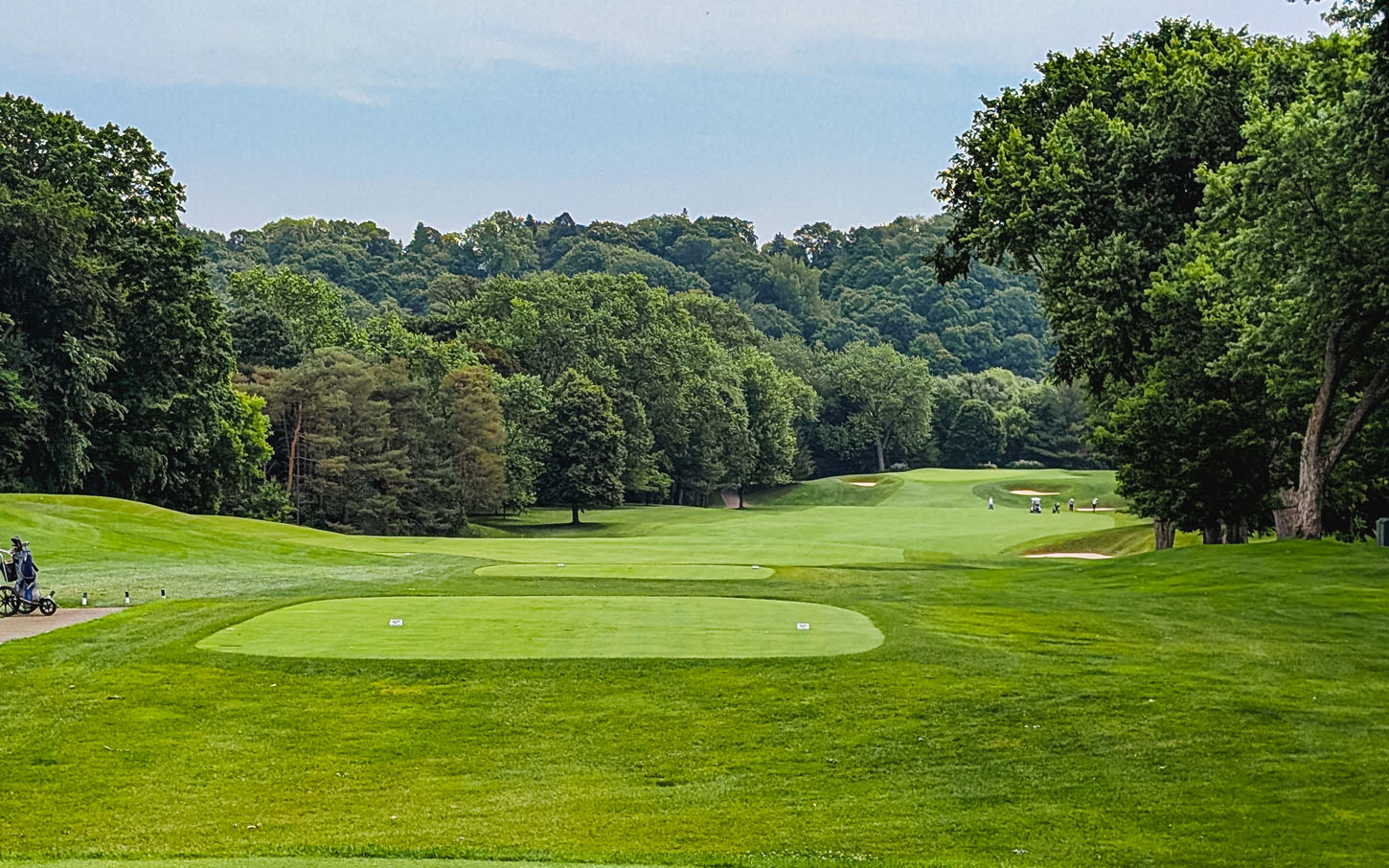
#4: Reflections From Under The Trees
As I strolled Rosedale’s fairways, I marvelled at how Toronto’s urban sprawl falls away with each step. I was in the trees often this day, but rarely did I lose a golf ball. The woodlands and rolling terrain demand care but allow recovery.
Walking is intimate at Rosedale. Greens and tees are never far from one another. In the rare case that there is a larger hill to navigate, stairs are made to accept pull/push carts and get you to the next tee both quicker and easier. Walking is encouraged. And they’ve done everything to ensure you have no excuse for getting your steps in.
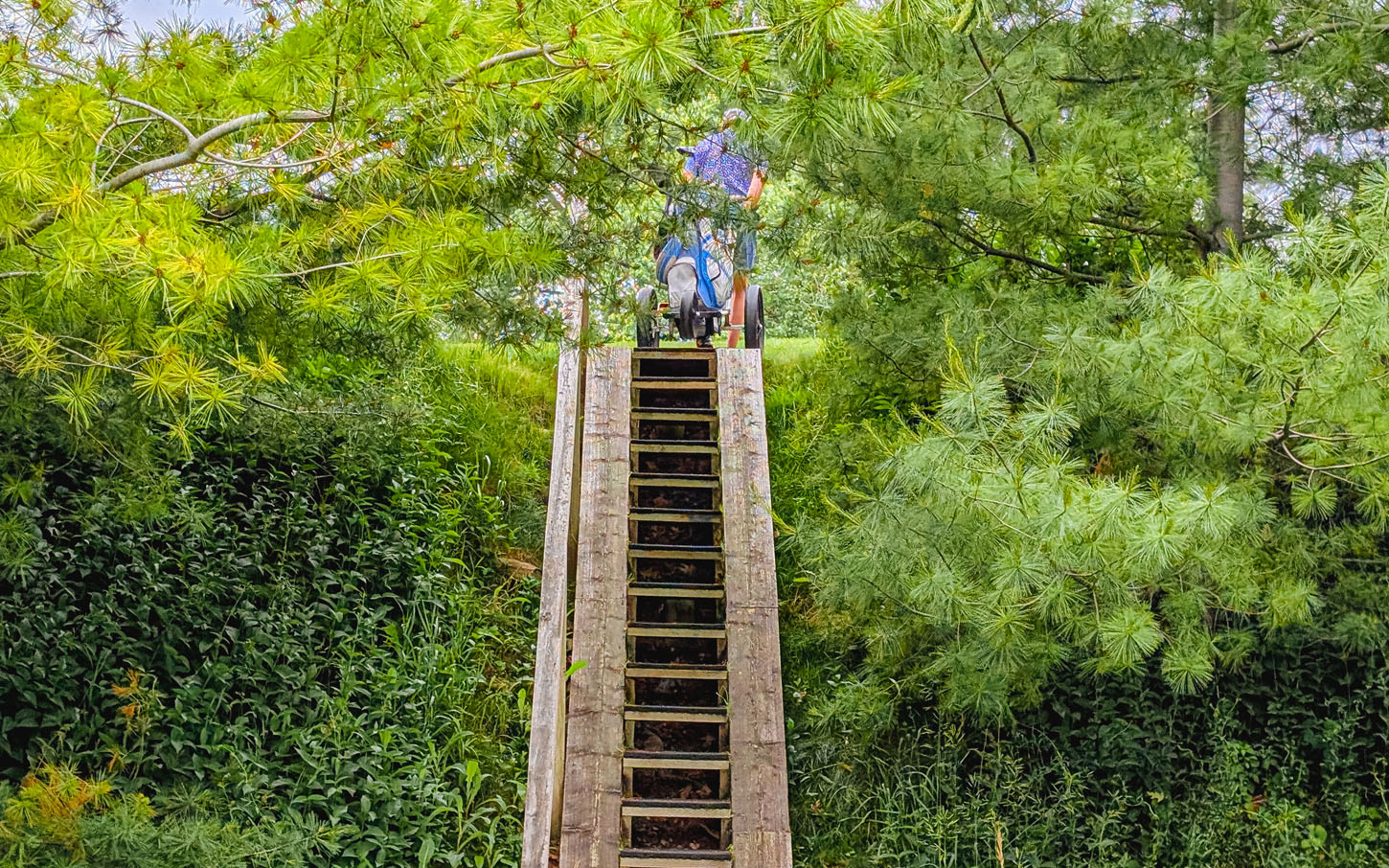
It’s not just the golf I remember at Rosedale, it’s the feeling that time moves differently under the cathedral canopy of old-growth maples and oaks. The rustle of leaves above the fourth green, the sunlight threading through the limbs along the 10th fairway, the clouds moving in for what looks like rain. The golfer plays fast but somehow slows down time here. A stark contrast to Toronto itself where time moves fast and people are just trying to get through.
There was a moment on the seventh tee where I stopped and realized how quiet it was. Far from a silence of absence, though. There were birds chirping above and the hum of the Don River. In a city that never stops moving, Rosedale offers a corner of stillness.
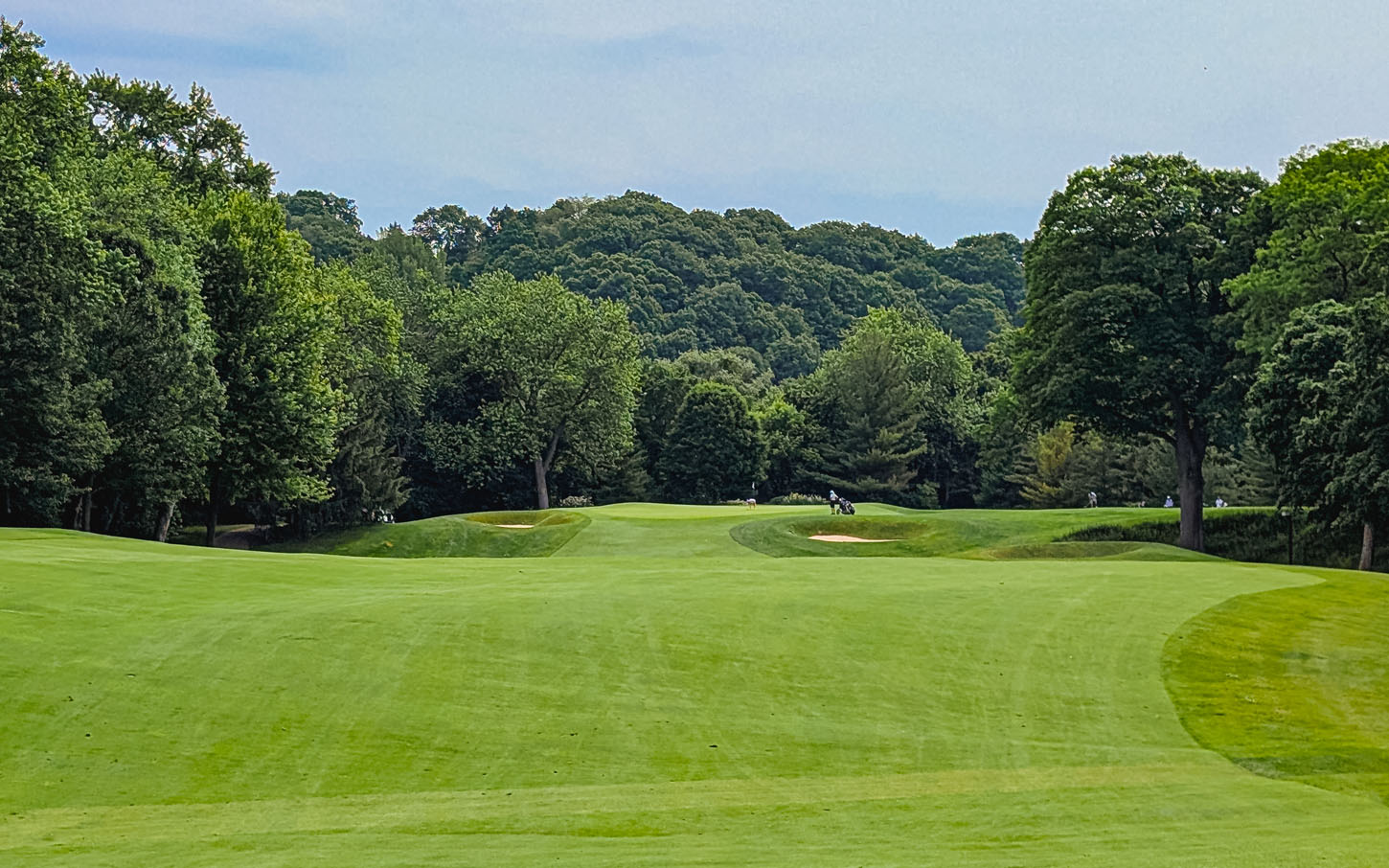
#5: A Tribute To Classic Golf
Rosedale is not long by modern standards—6,525 yards from the back tees, par 71 (par 73 for ladies). But it more than makes up for this in character. The golf course at Rosedale isn’t flashy. It doesn’t posture and it doesn’t chase trends. That’s what makes it matter. In an era where many clubs stretch for yardage, big names in design, and retrofit themselves with cavernous bunkers or dramatic features, Rosedale is grounded in something pure. It’s an understated elegance that exists here—the bunkerless 14th for example—and its something preserved extremely well.
You don’t overpower Rosedale; you need to outthink it. Fairway positioning matters. Approach angles are crucial. Green surrounds are deceptively complex. A single misplaced tee shot might not cost you a stroke right away, but it will slowly unravel your advantage over the next two. To play Rosedale is to play the game the way it was intended: in dialogue with the landscape, in rhythm with nature, and in deference to a kind of golf that has always been—and always should be—enough on its own.
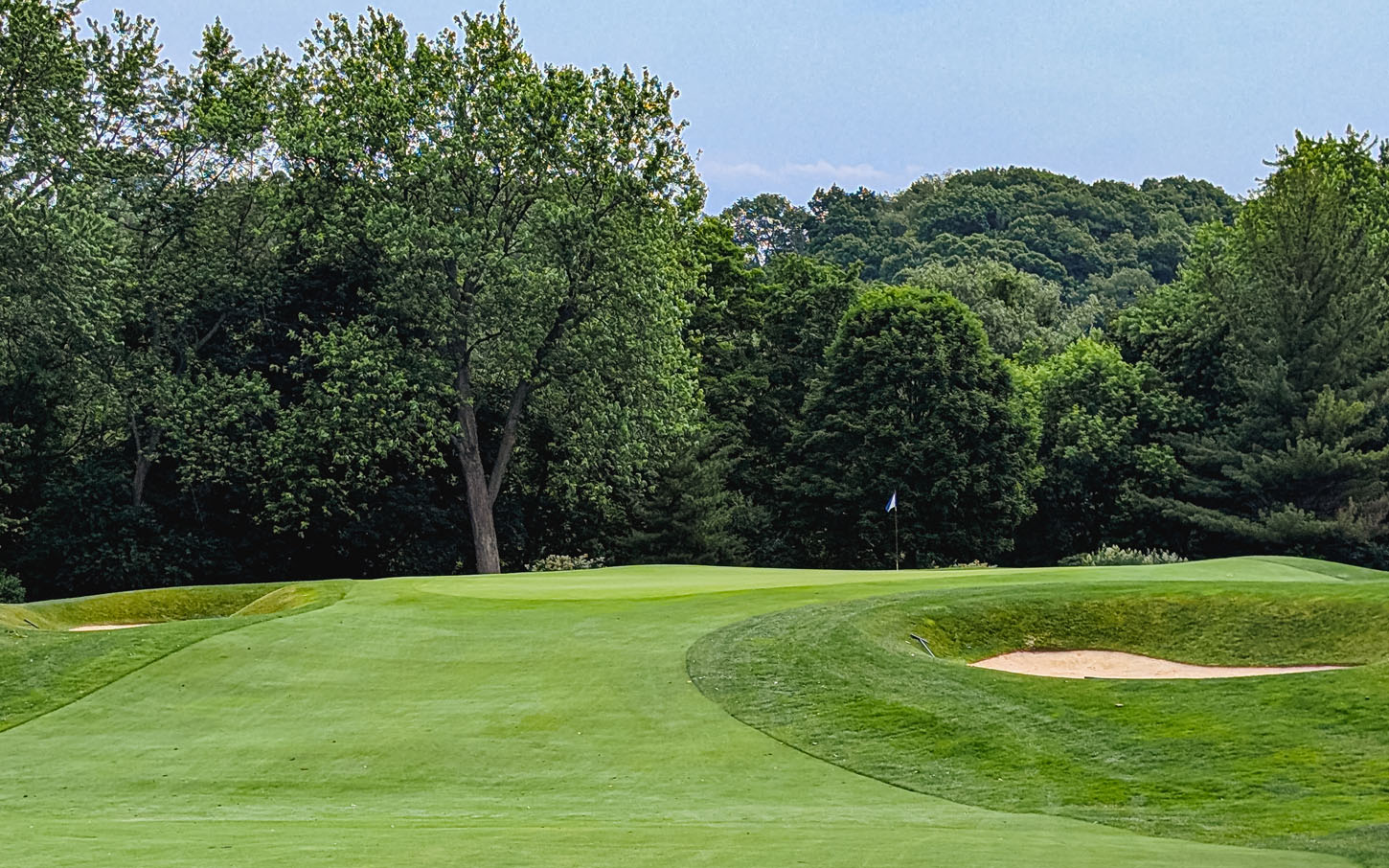
#6: Summing It Up
In that warm, heavy morning air, I felt a true connection to Rosedale. It is the type of place that doesn’t need to brag about its pedigree. It doesn’t rely on jaw-dropping visuals or gimmicks, though it is quietly beautiful in ways that only those who pay attention will see. It doesn’t clamor for recognition, yet it’s widely respected by many.
What struck me most, especially in the stillness beneath the many trees I found myself under, was how Rosedale holds space for something rare: reflection. In a city that moves at the speed of light, Rosedale moves at the pace of memory. Every step along its fairways is a nod to something older, wiser, and more enduring.
Rosedale is a keeper of the flame of classic golf. It features thoughtful architecture and quiet elegance. It teaches you that greatness in golf doesn’t need to be loud. Sometimes, it’s found in the gentle curve of a fairway, the dappled shade of an old tree, or the feel of your well-worn putter on a Ross green that still challenges and delights. Rosedale lives in the character of its golf course, the care in its conditioning, and the reverence it commands. You feel it the moment you step onto the first tee, and it only deepens with each shot, each step, and each round.
I have been five-minutes from Yonge Street for the vast majority of my life, but never has it been so great.
